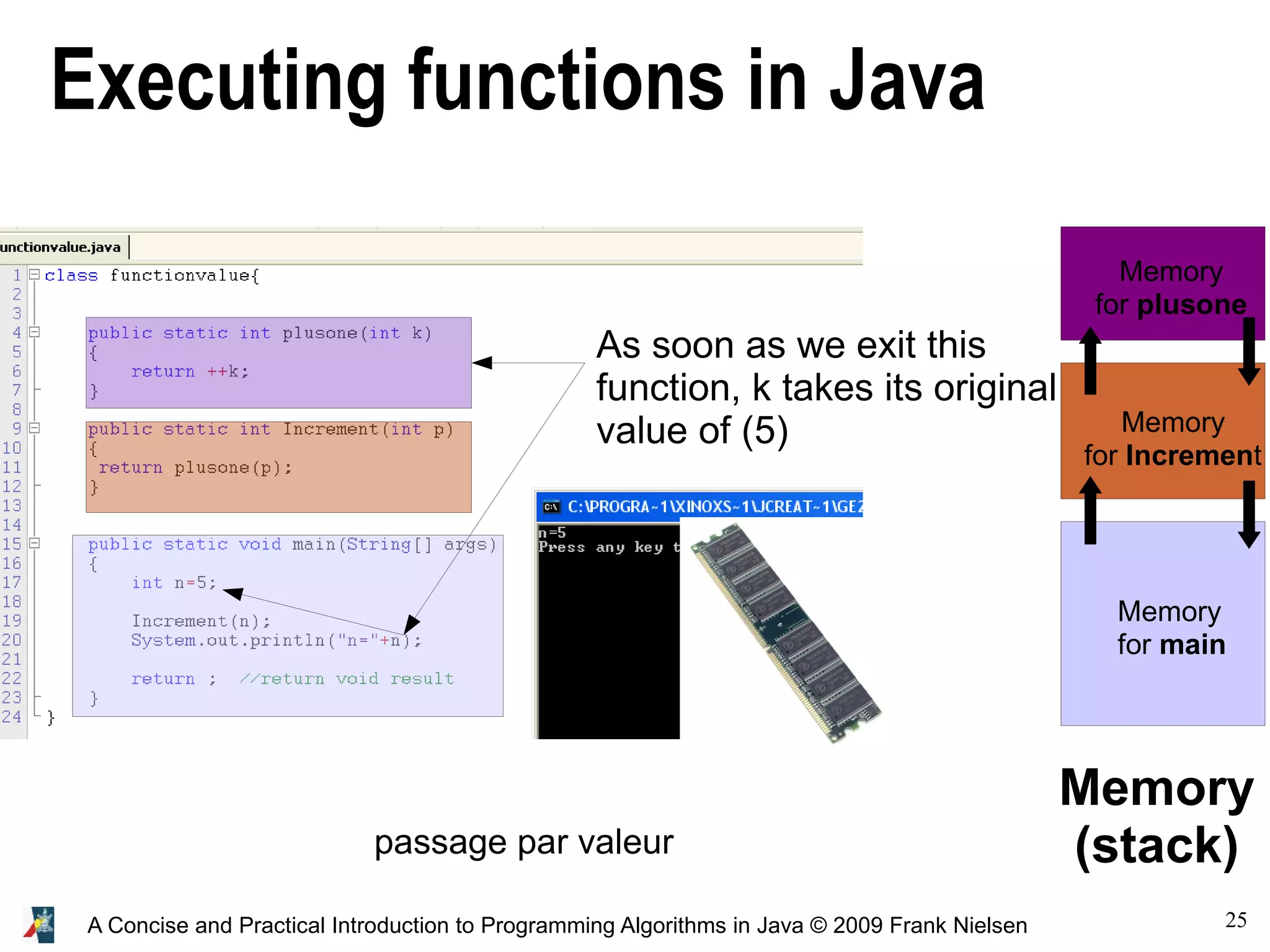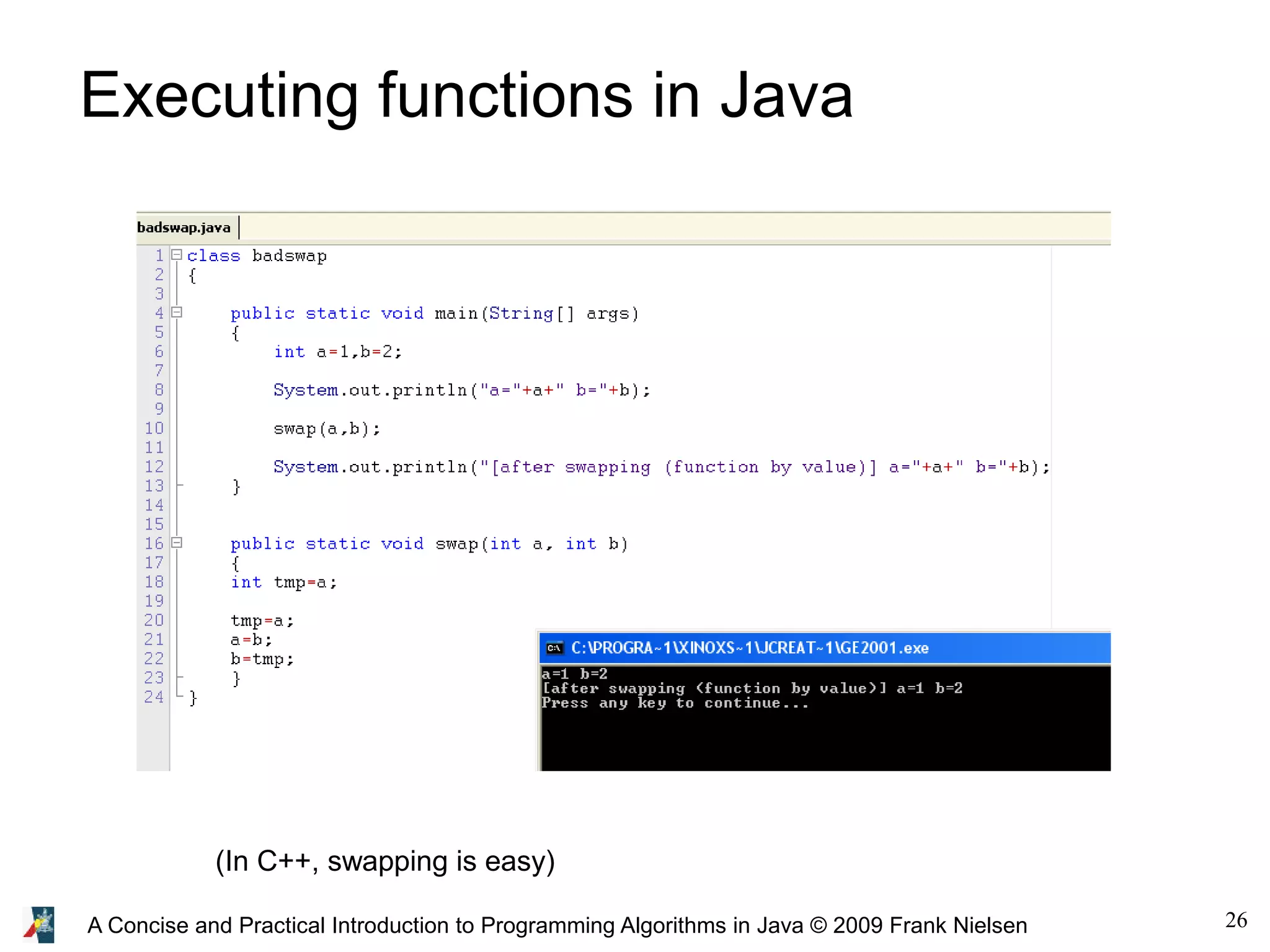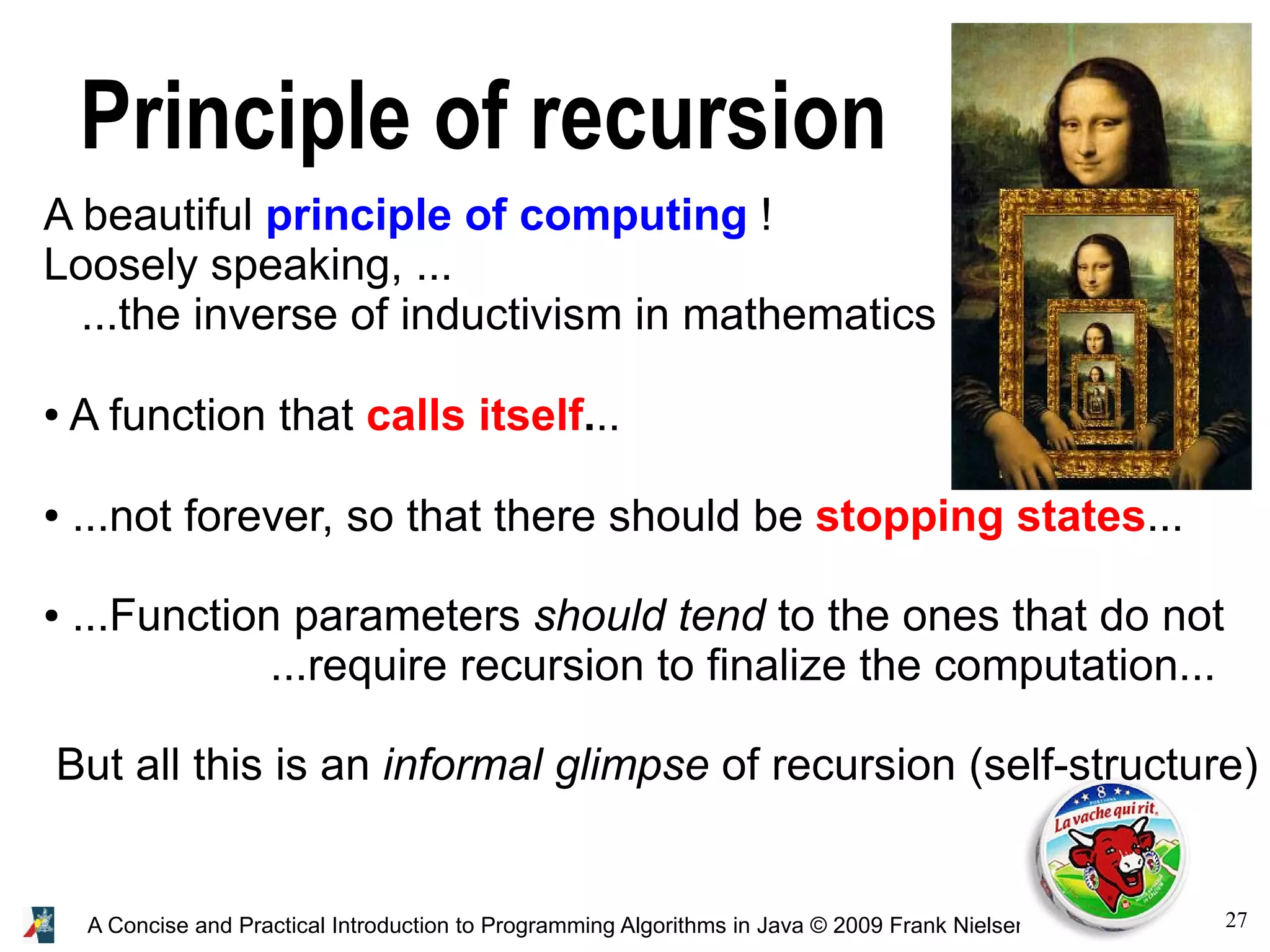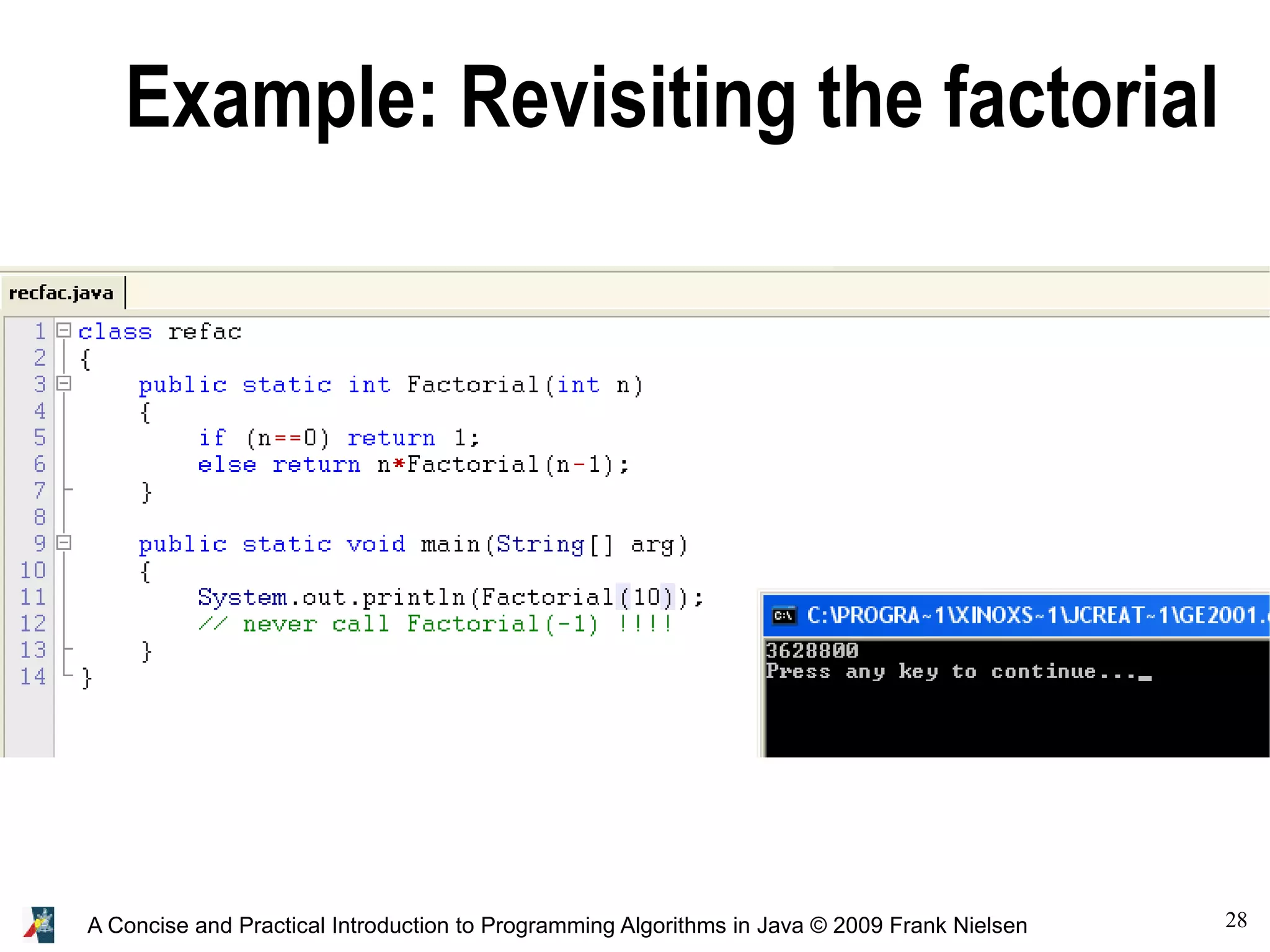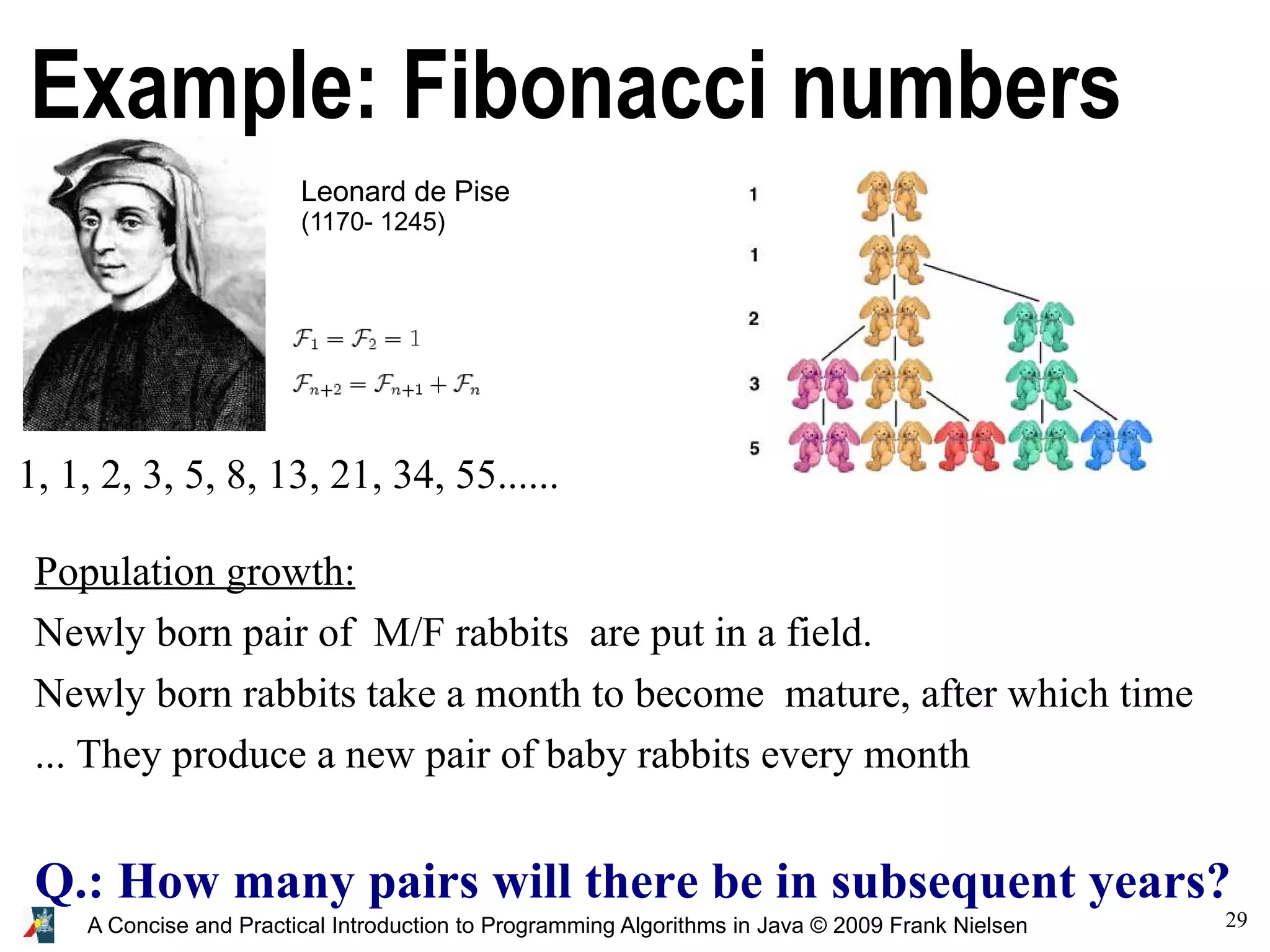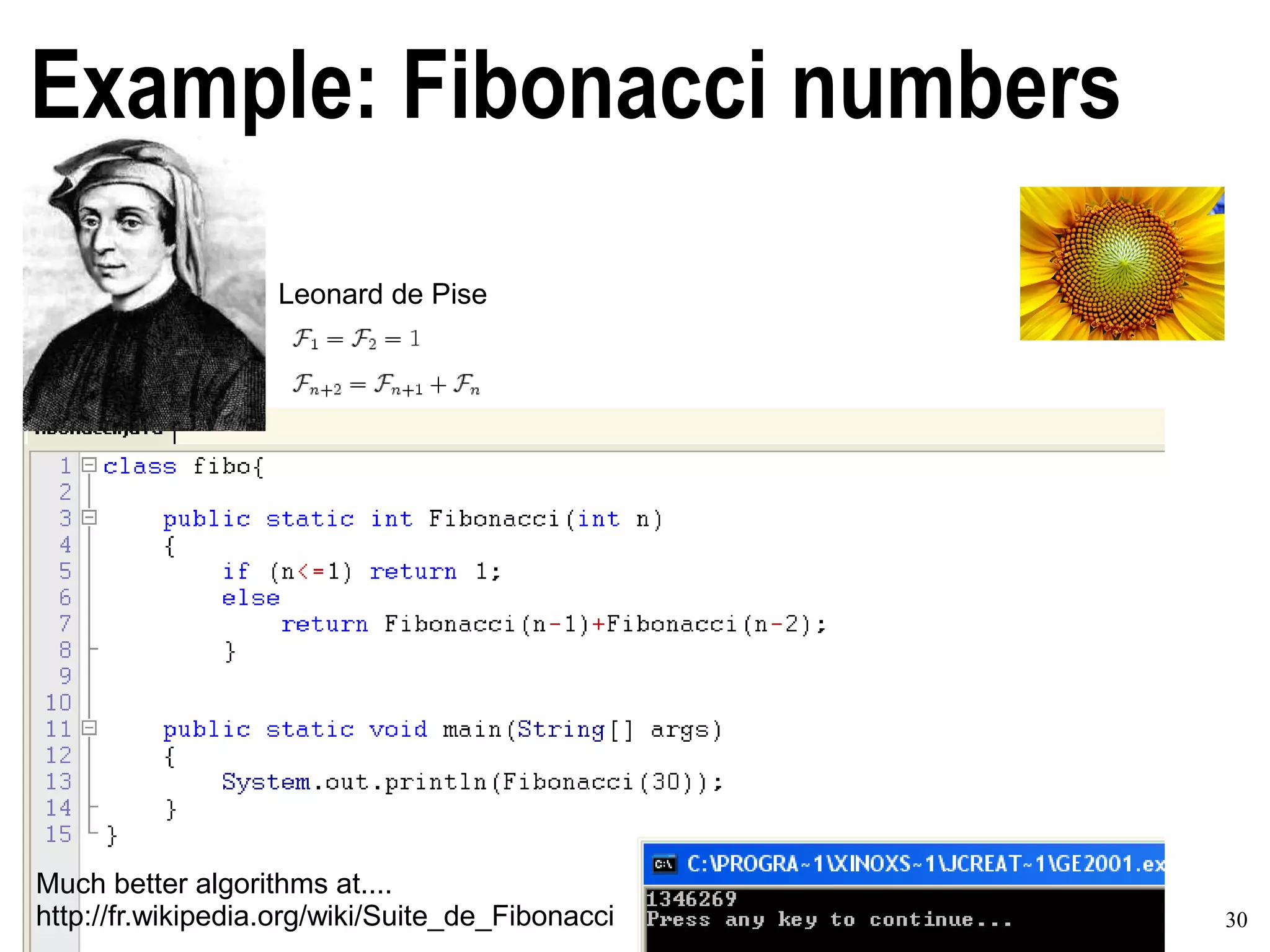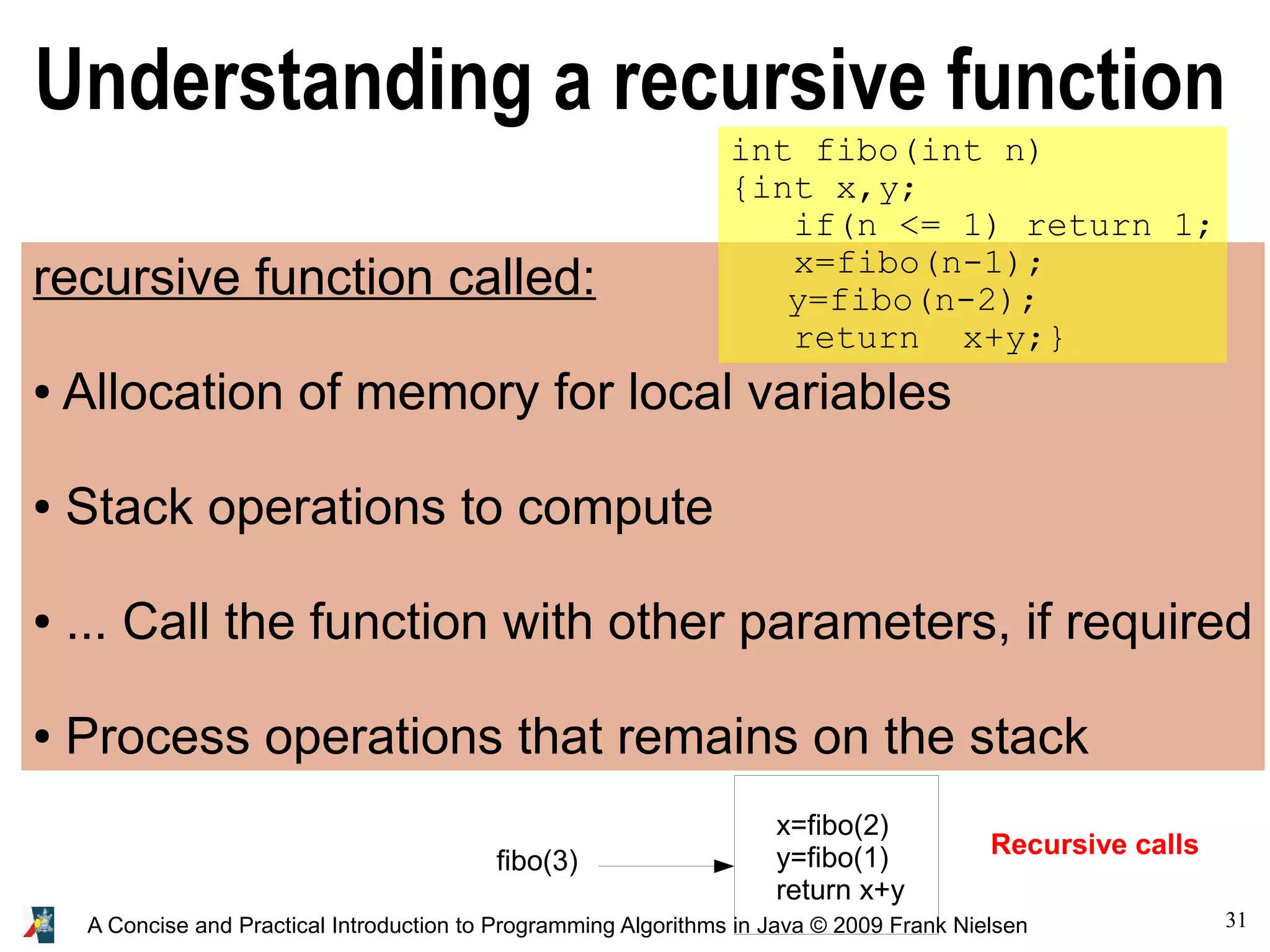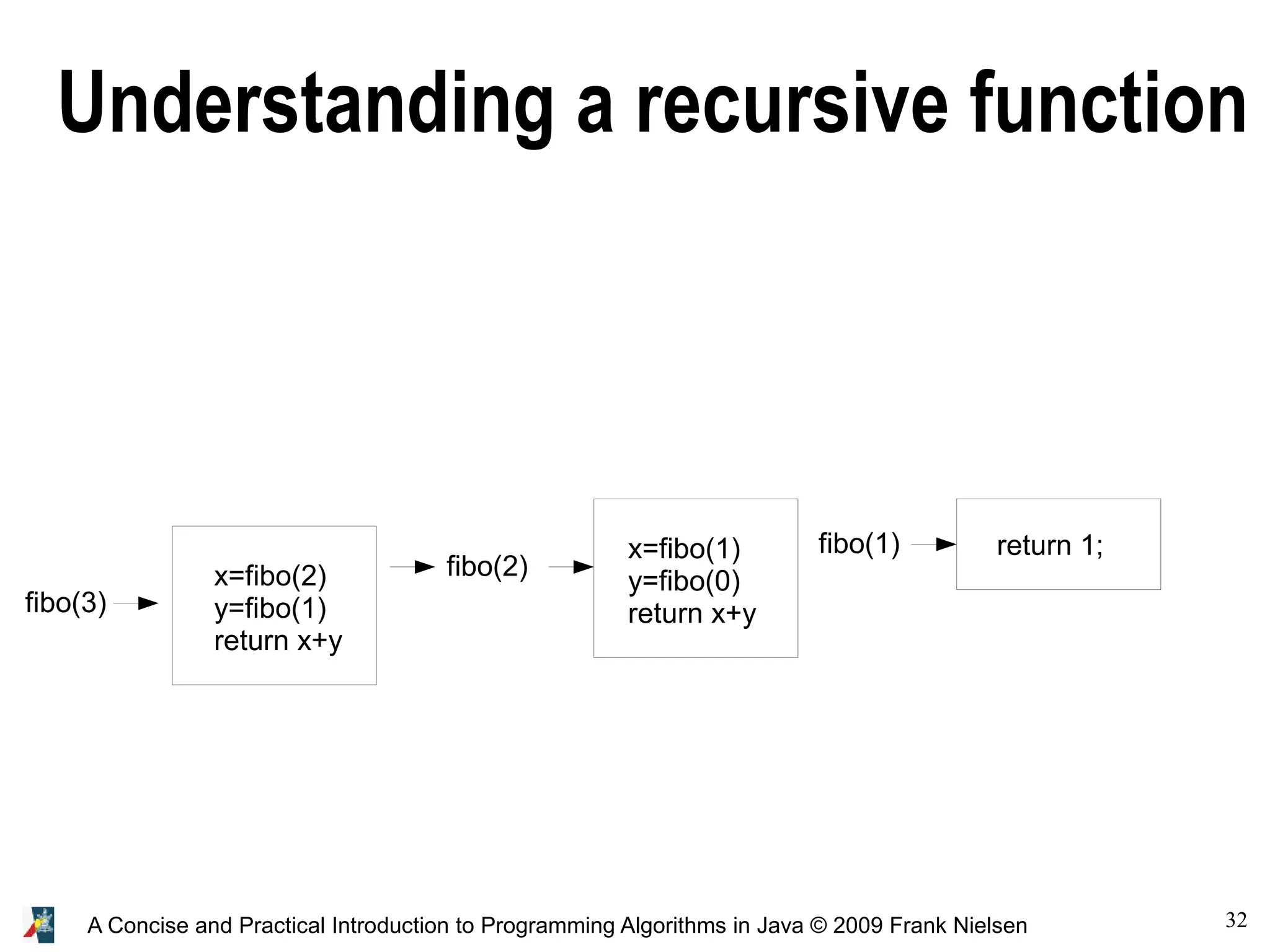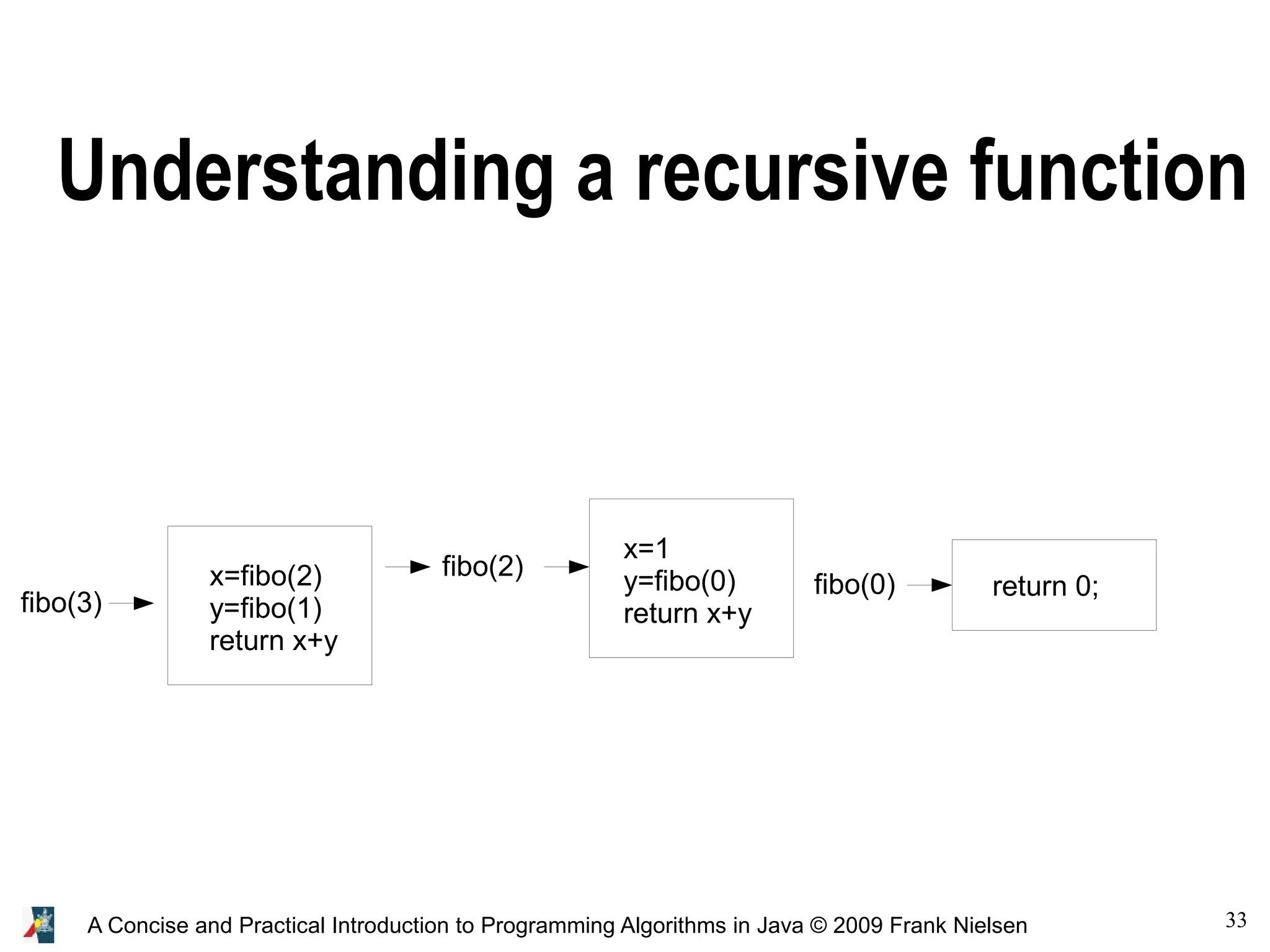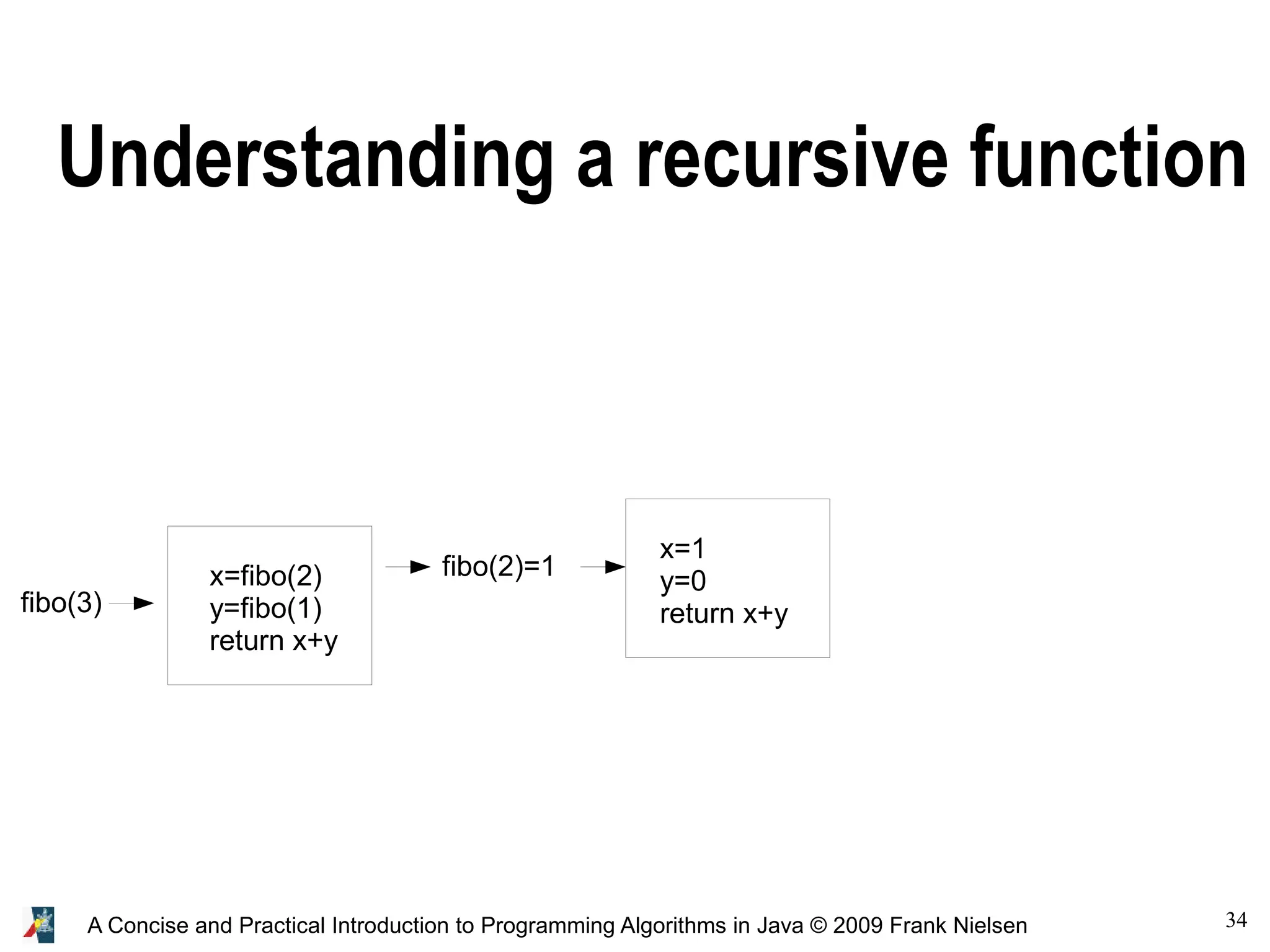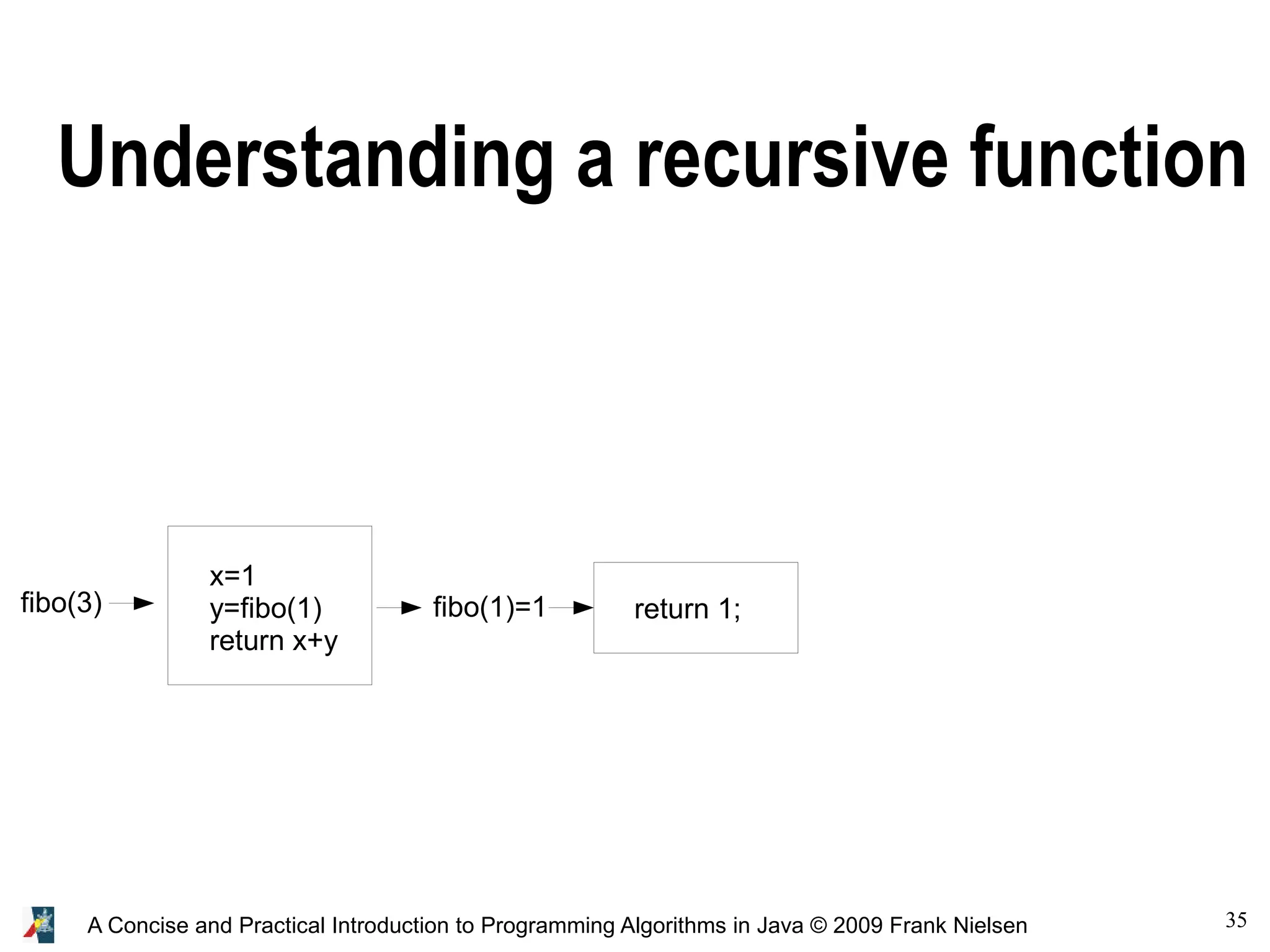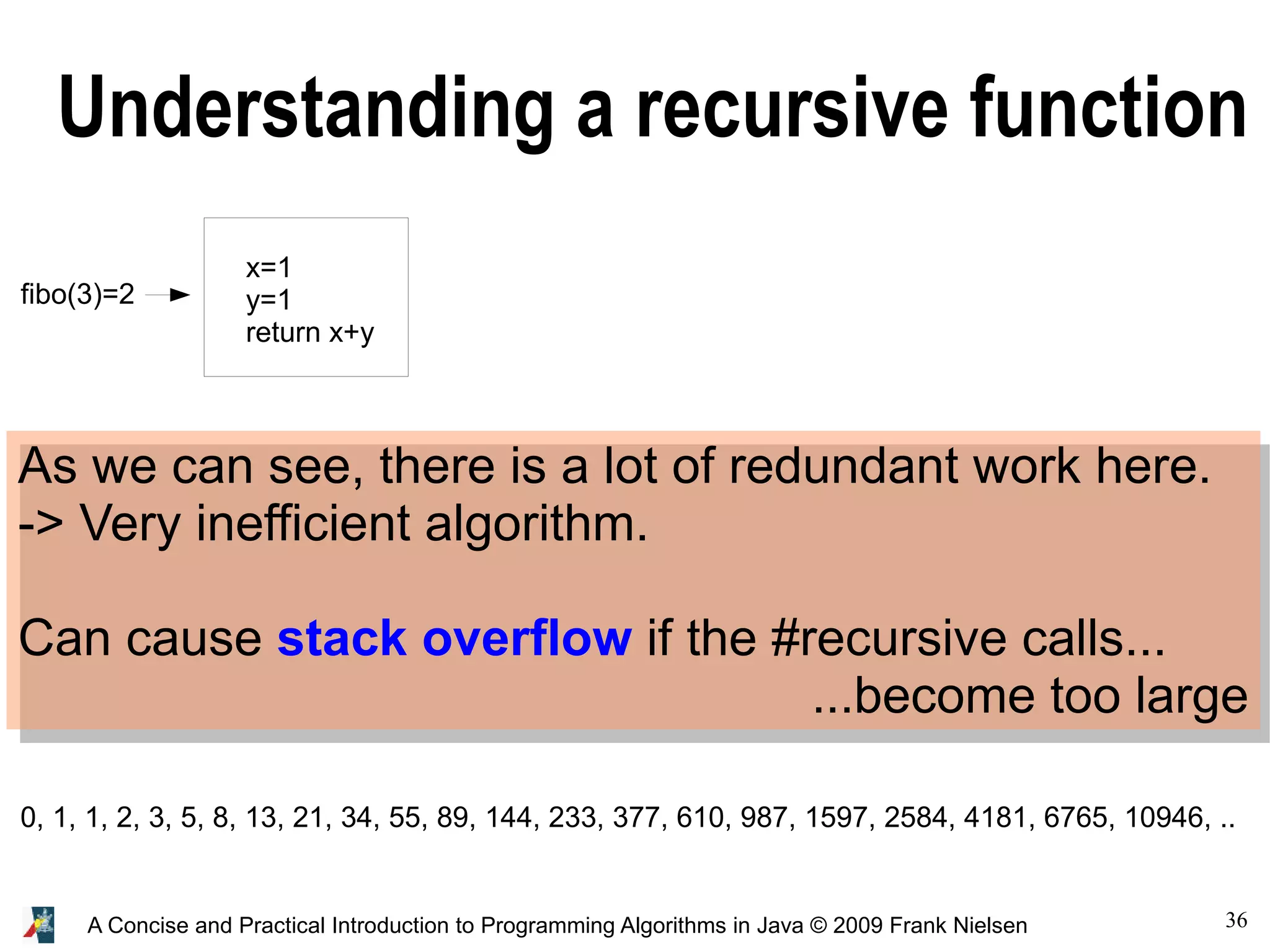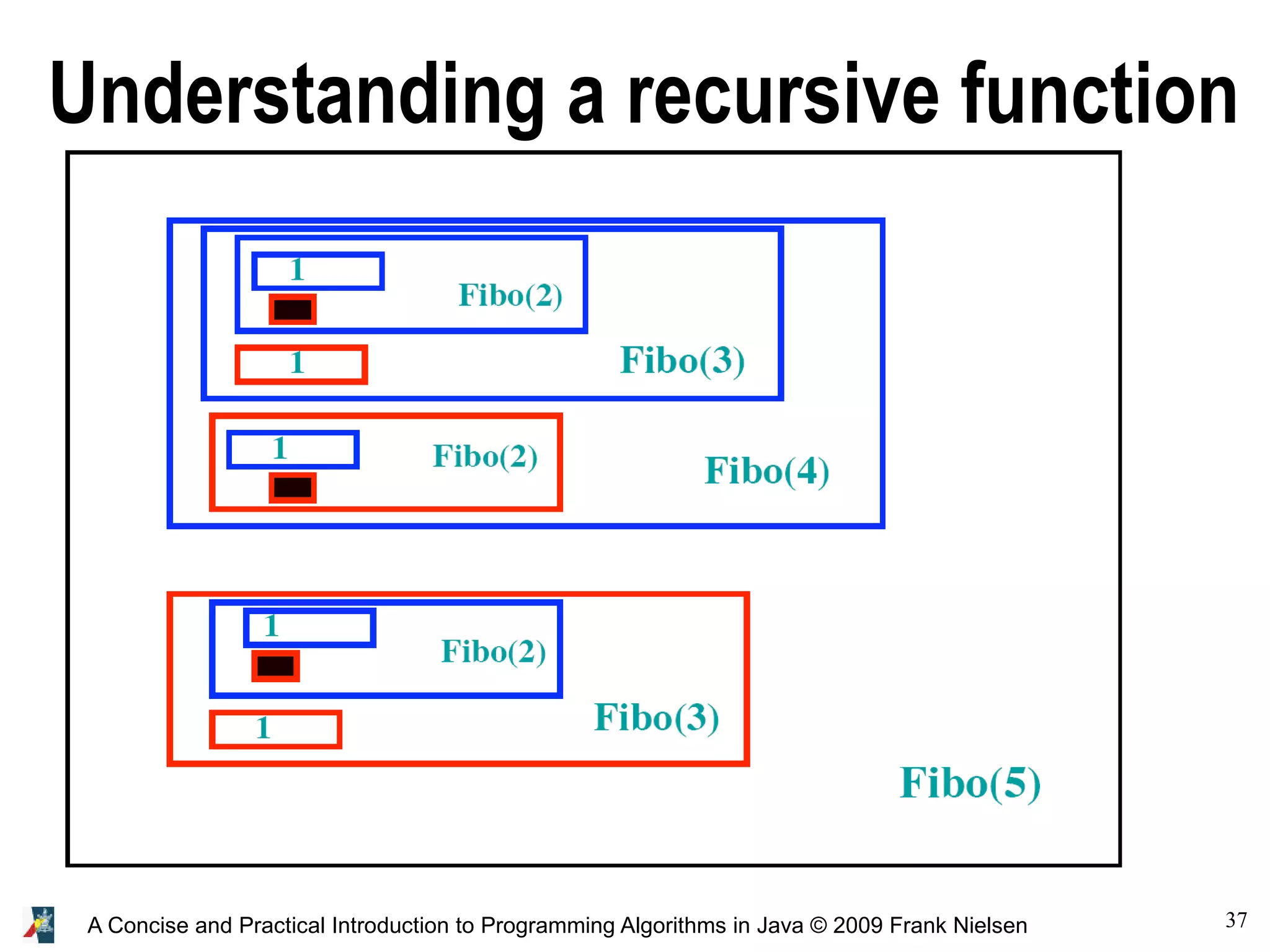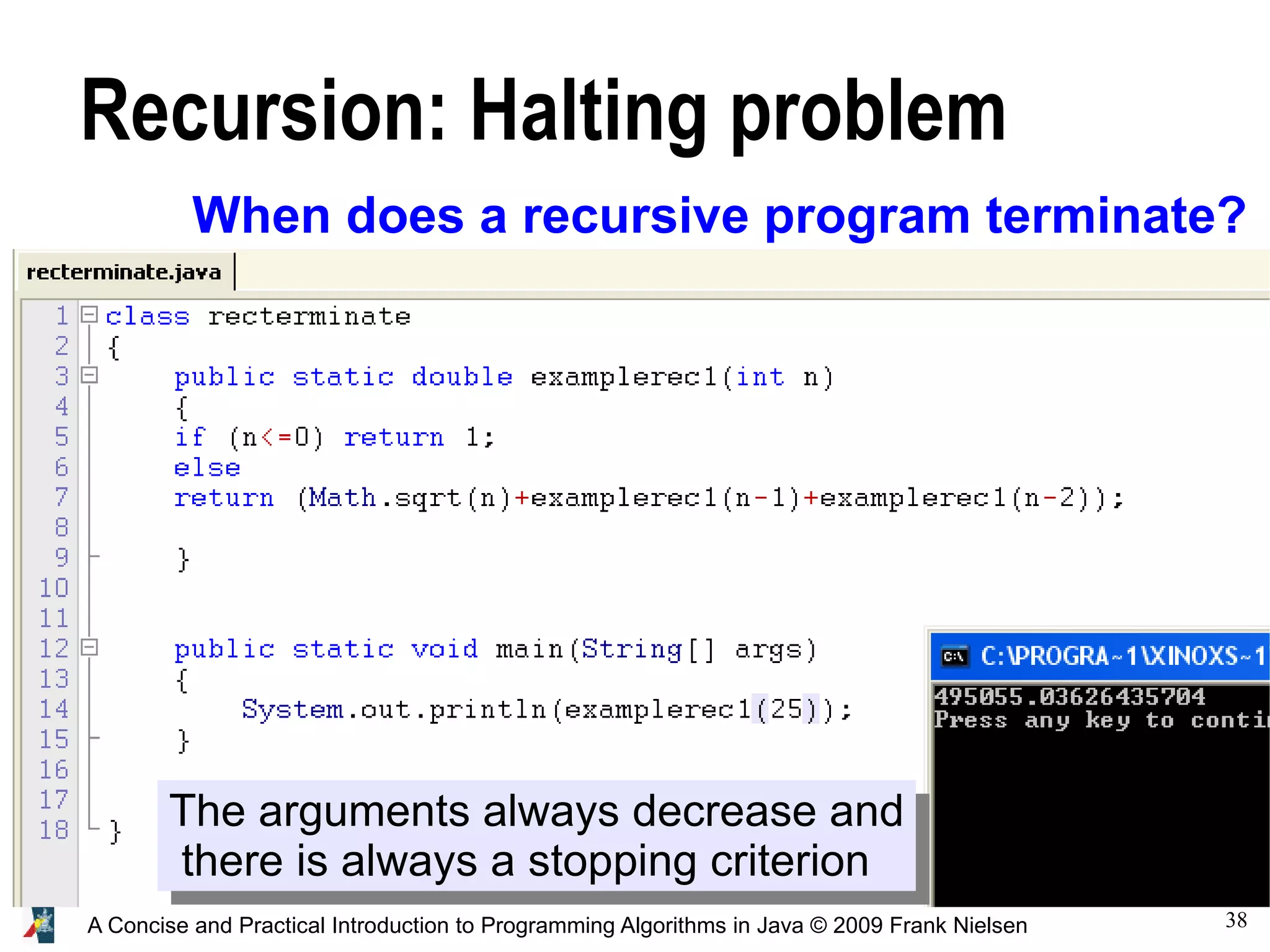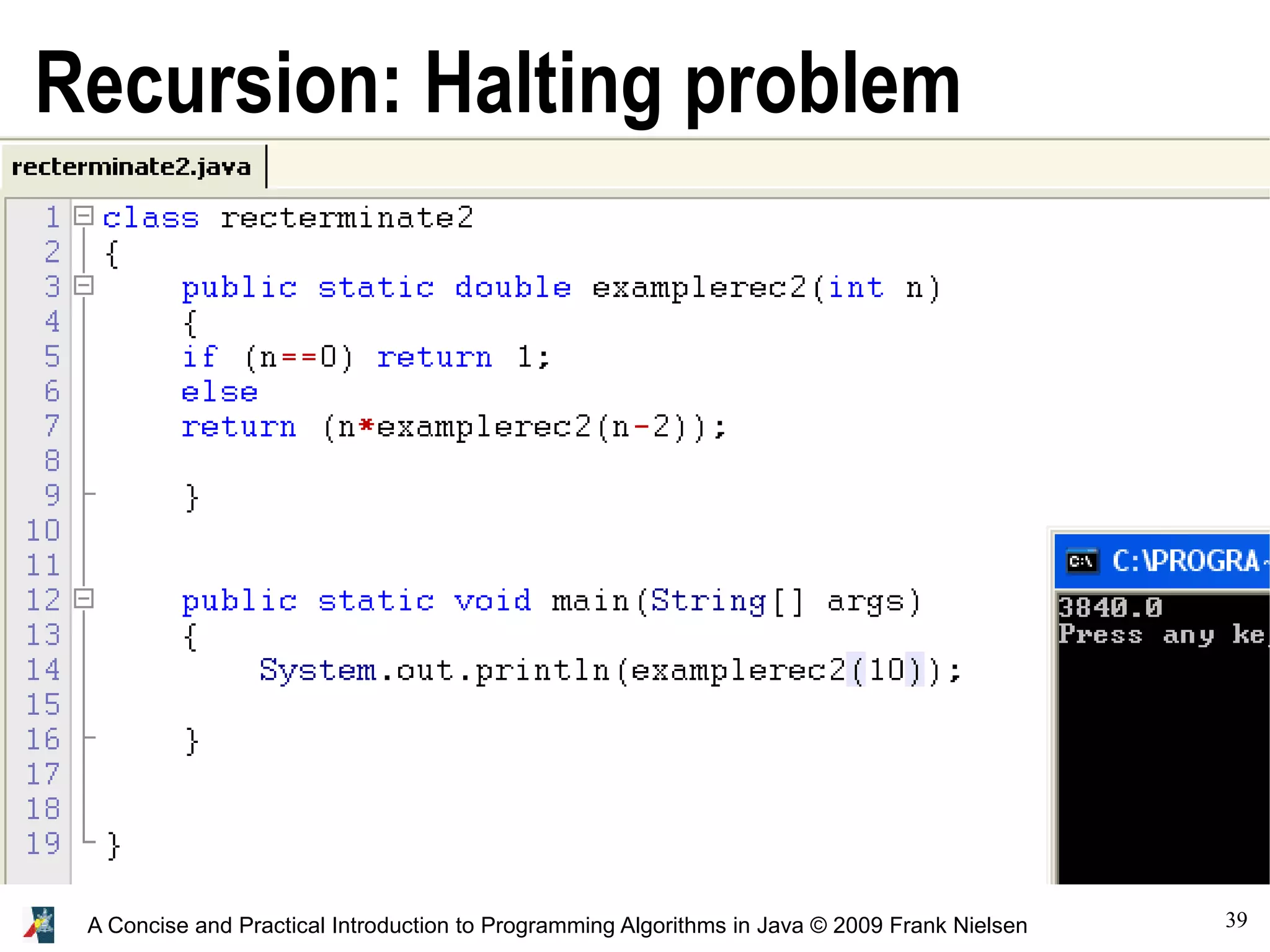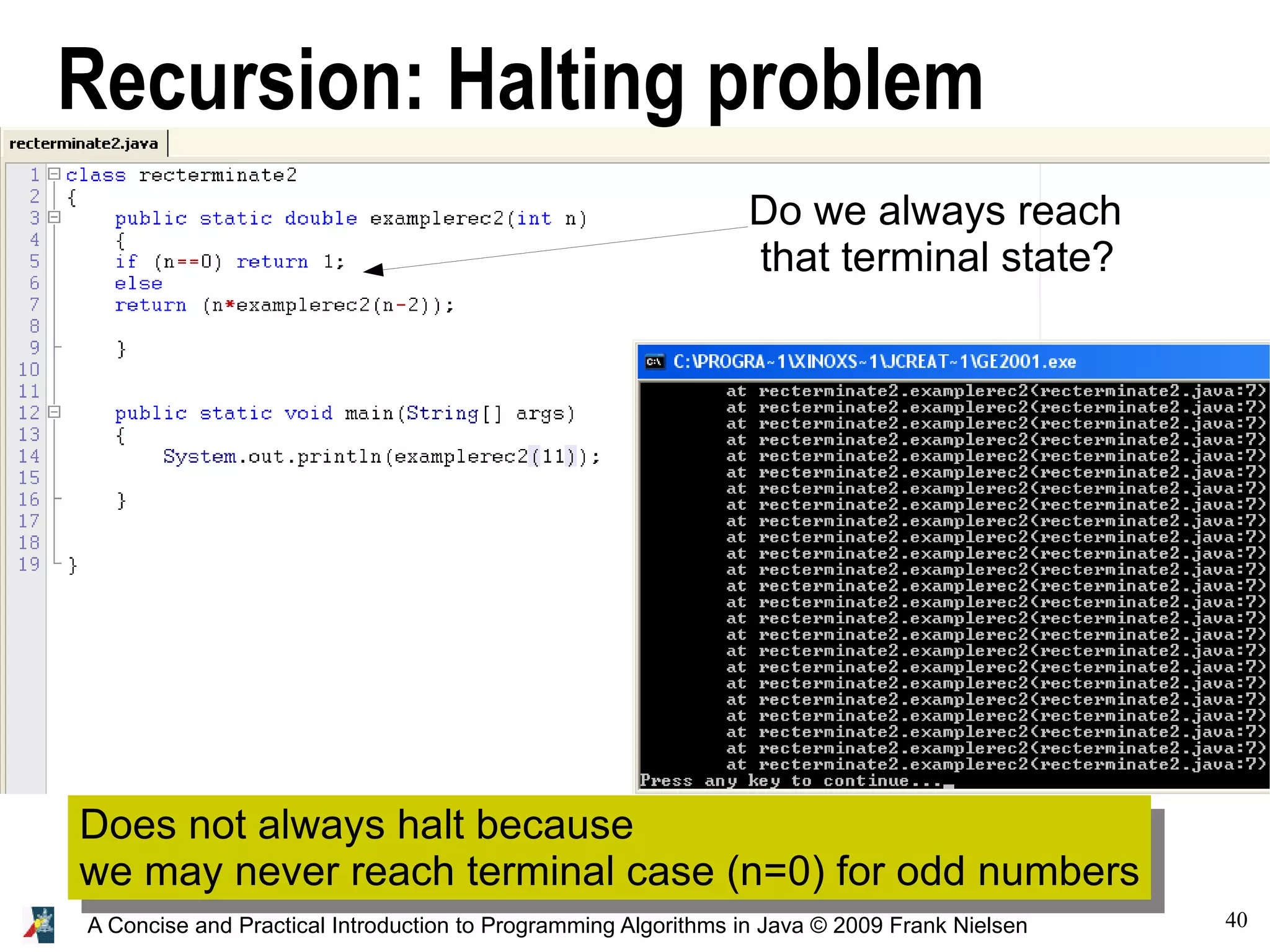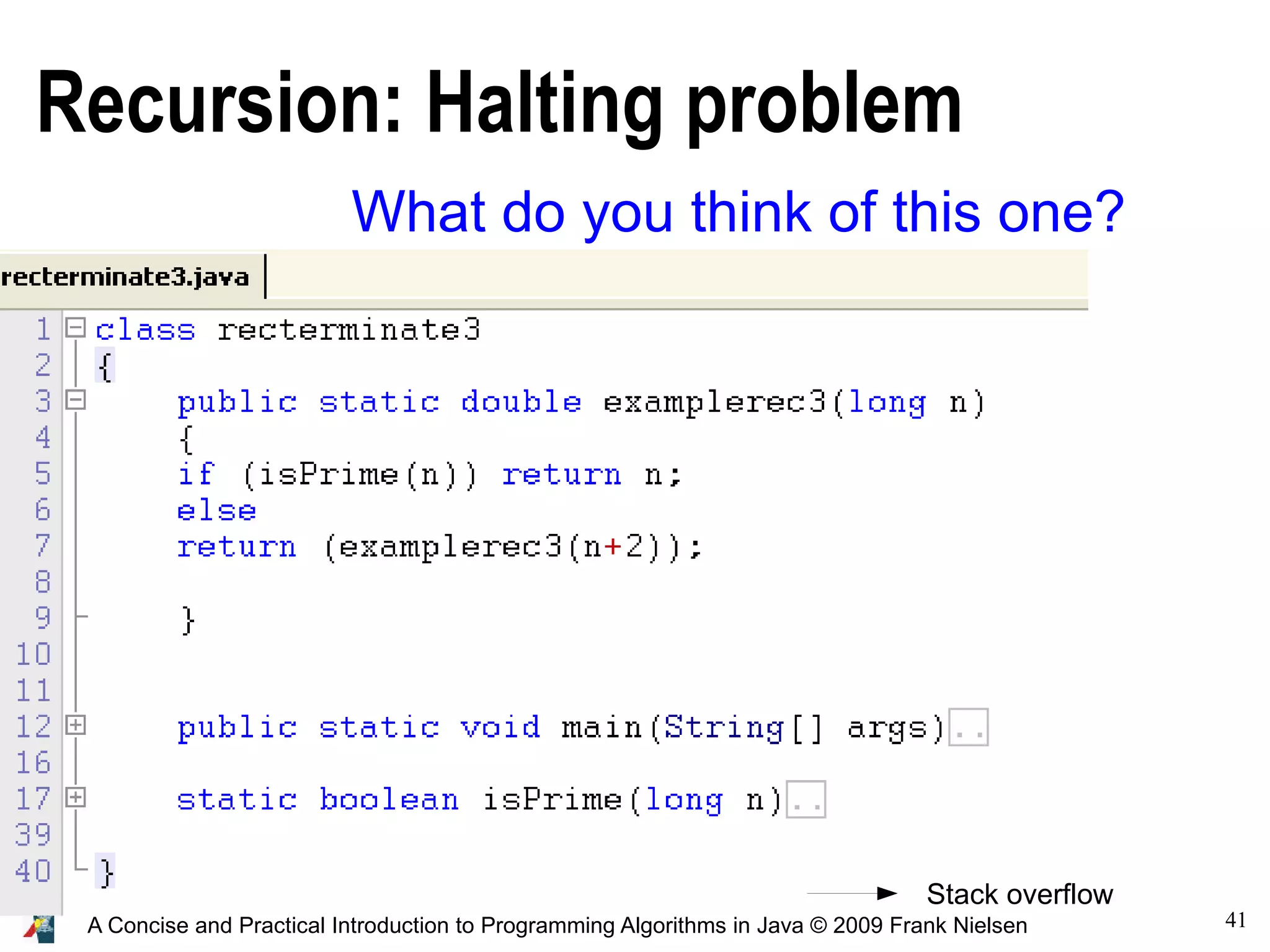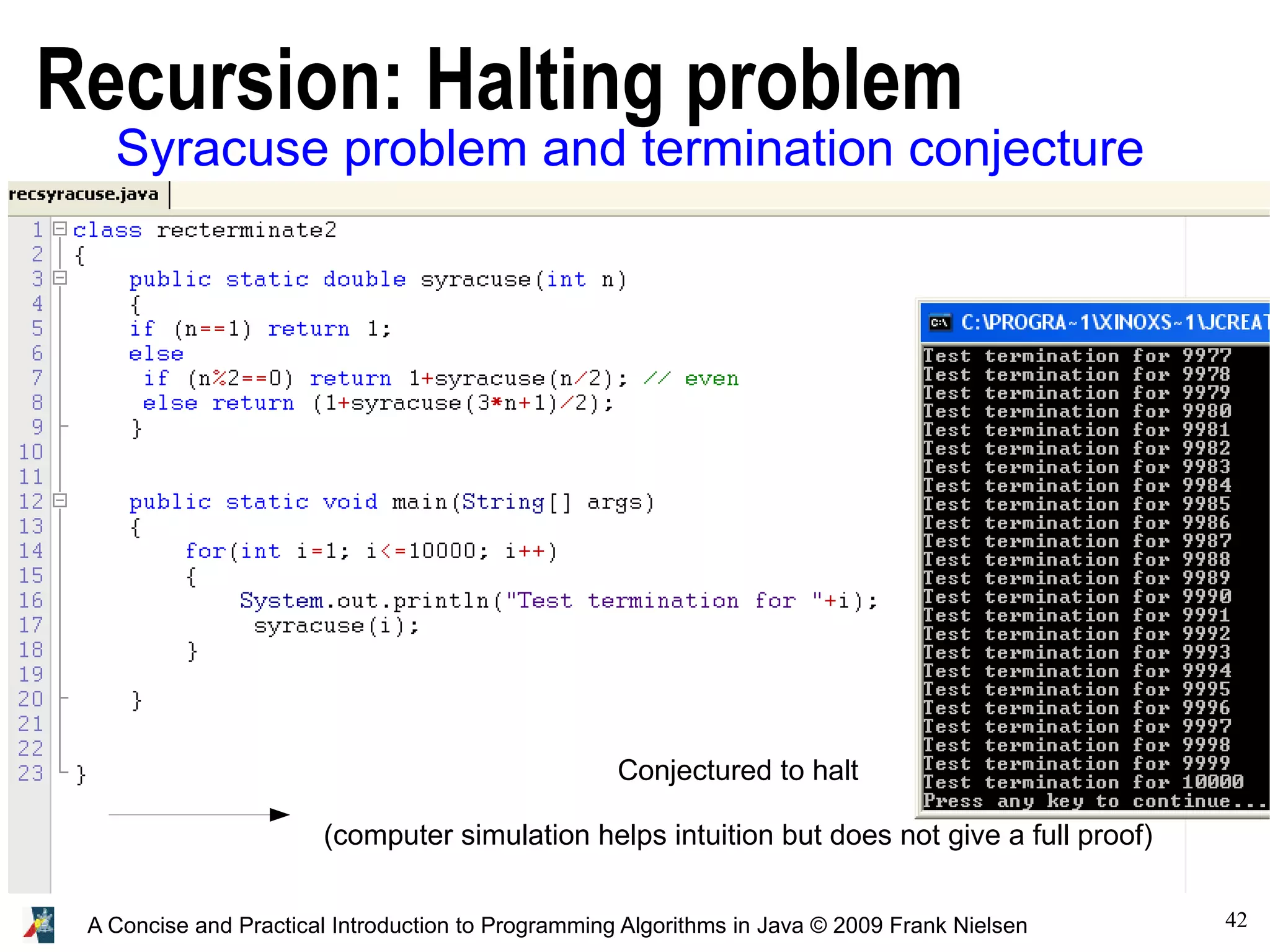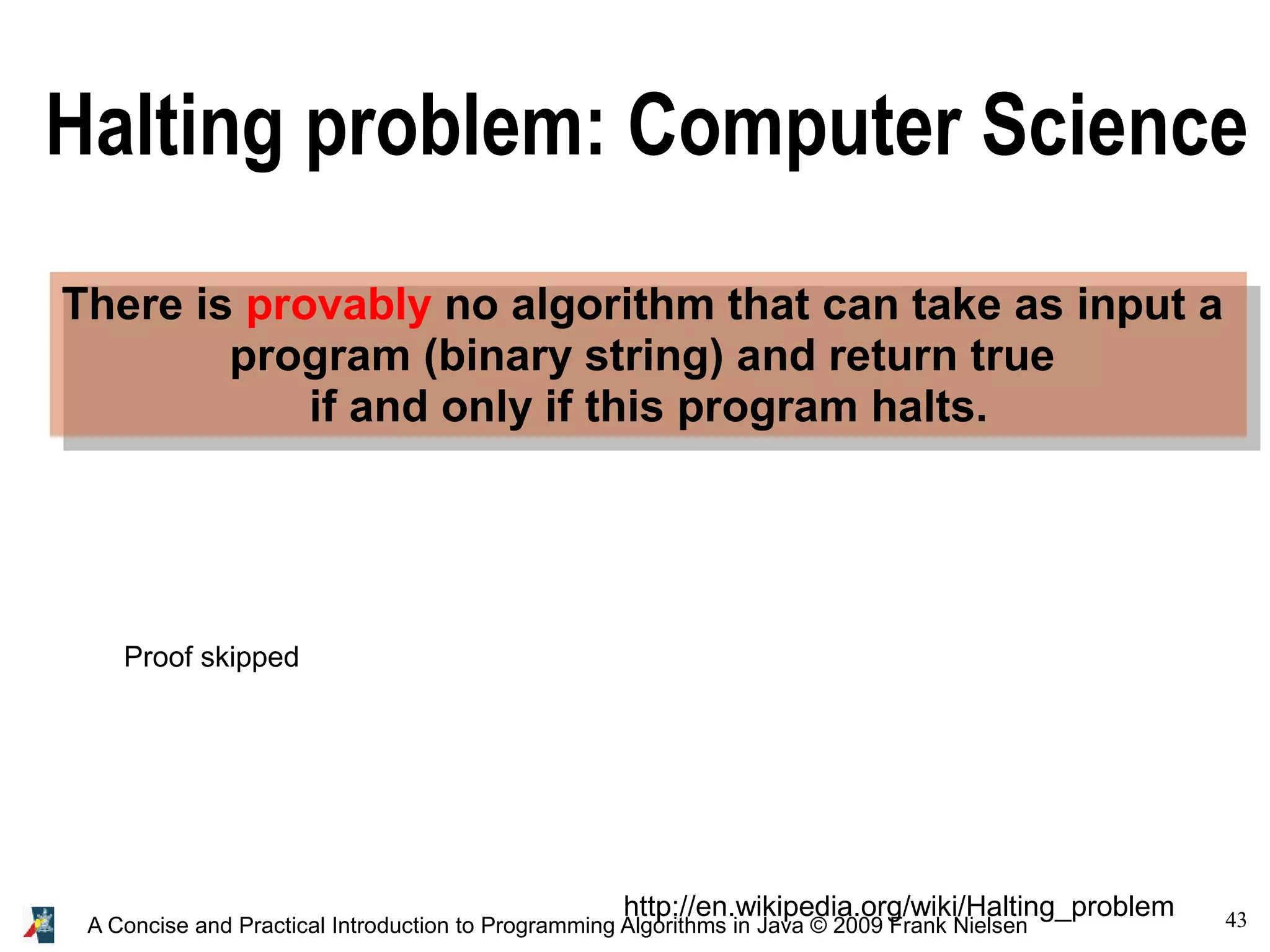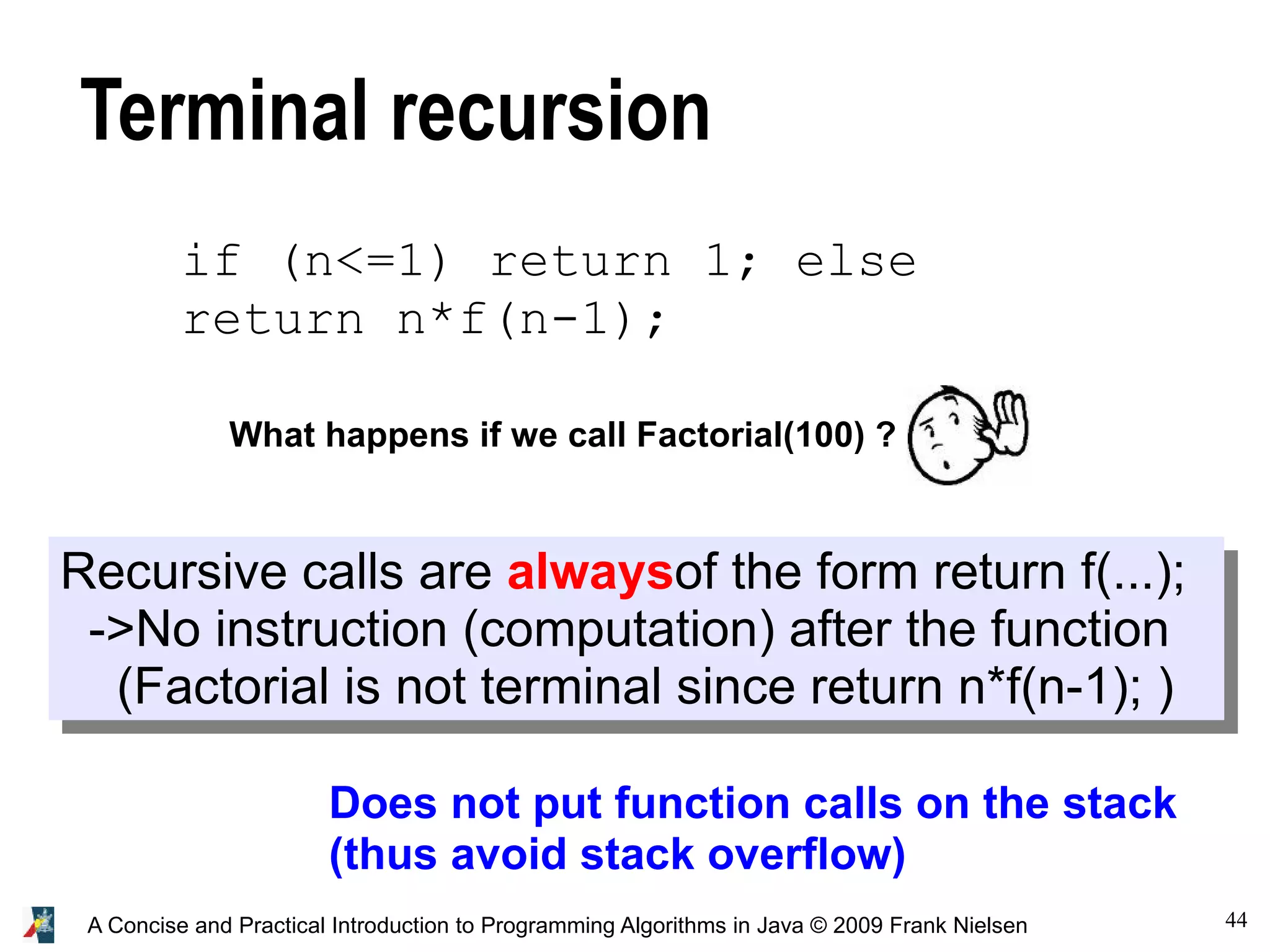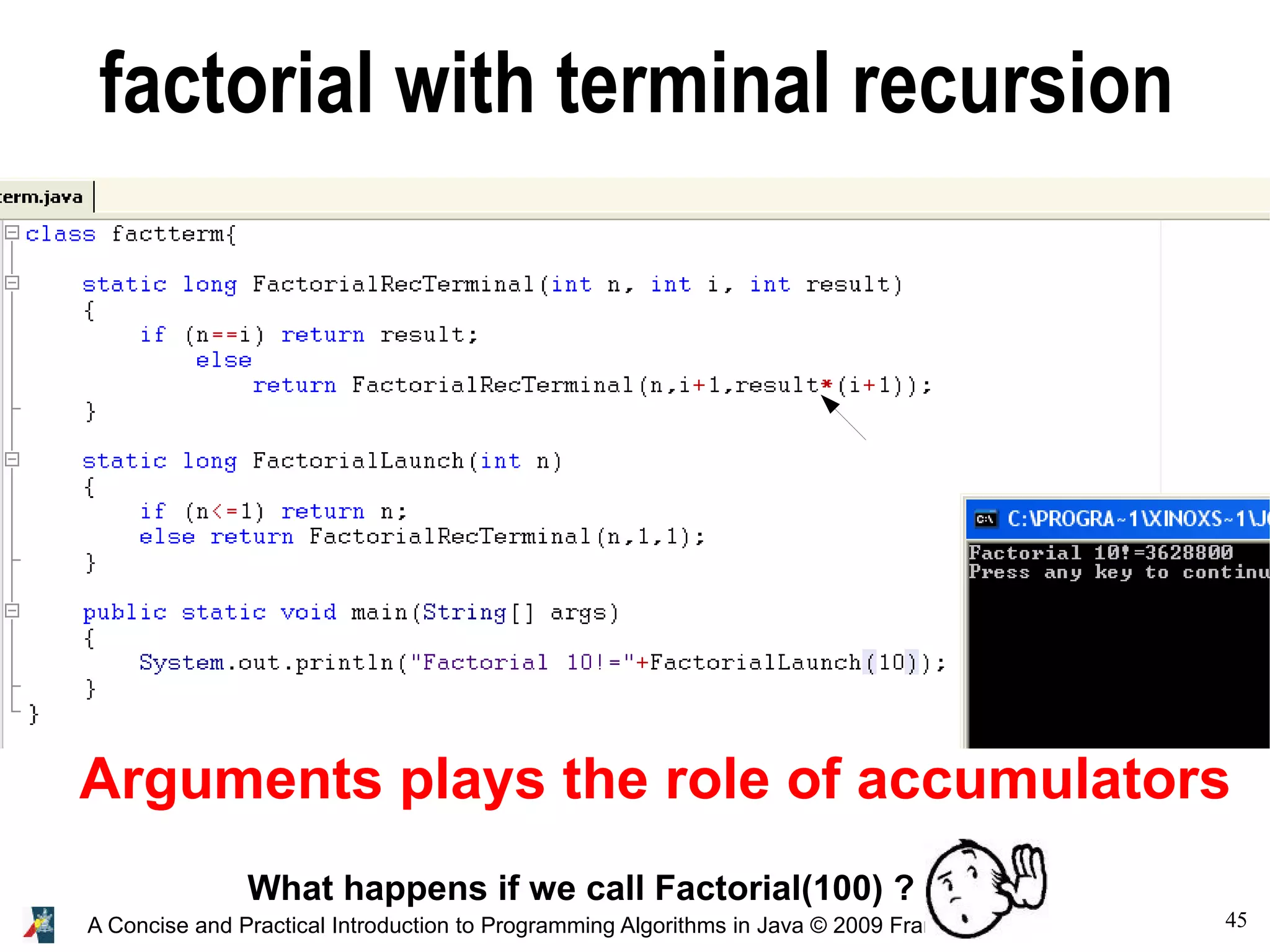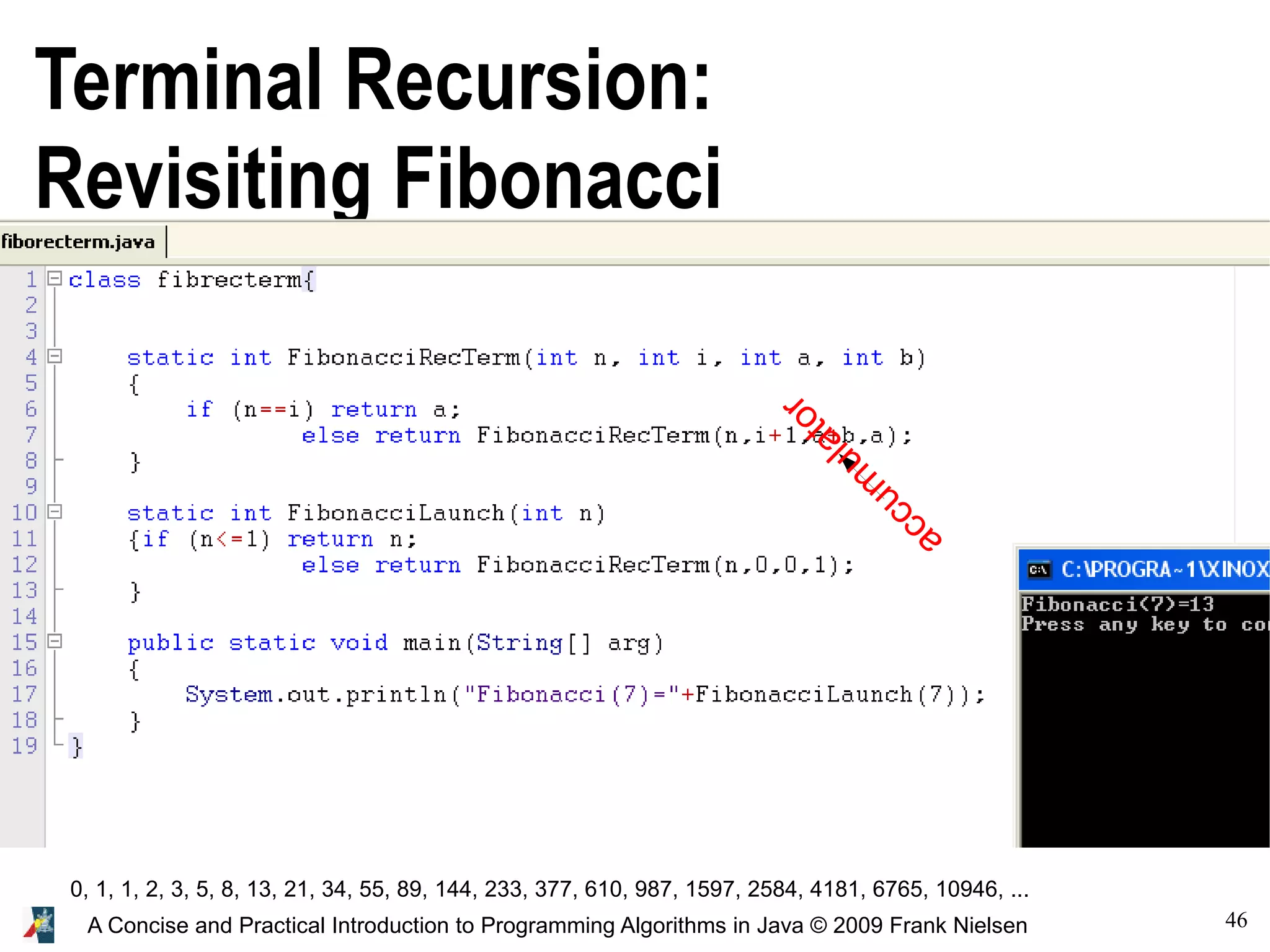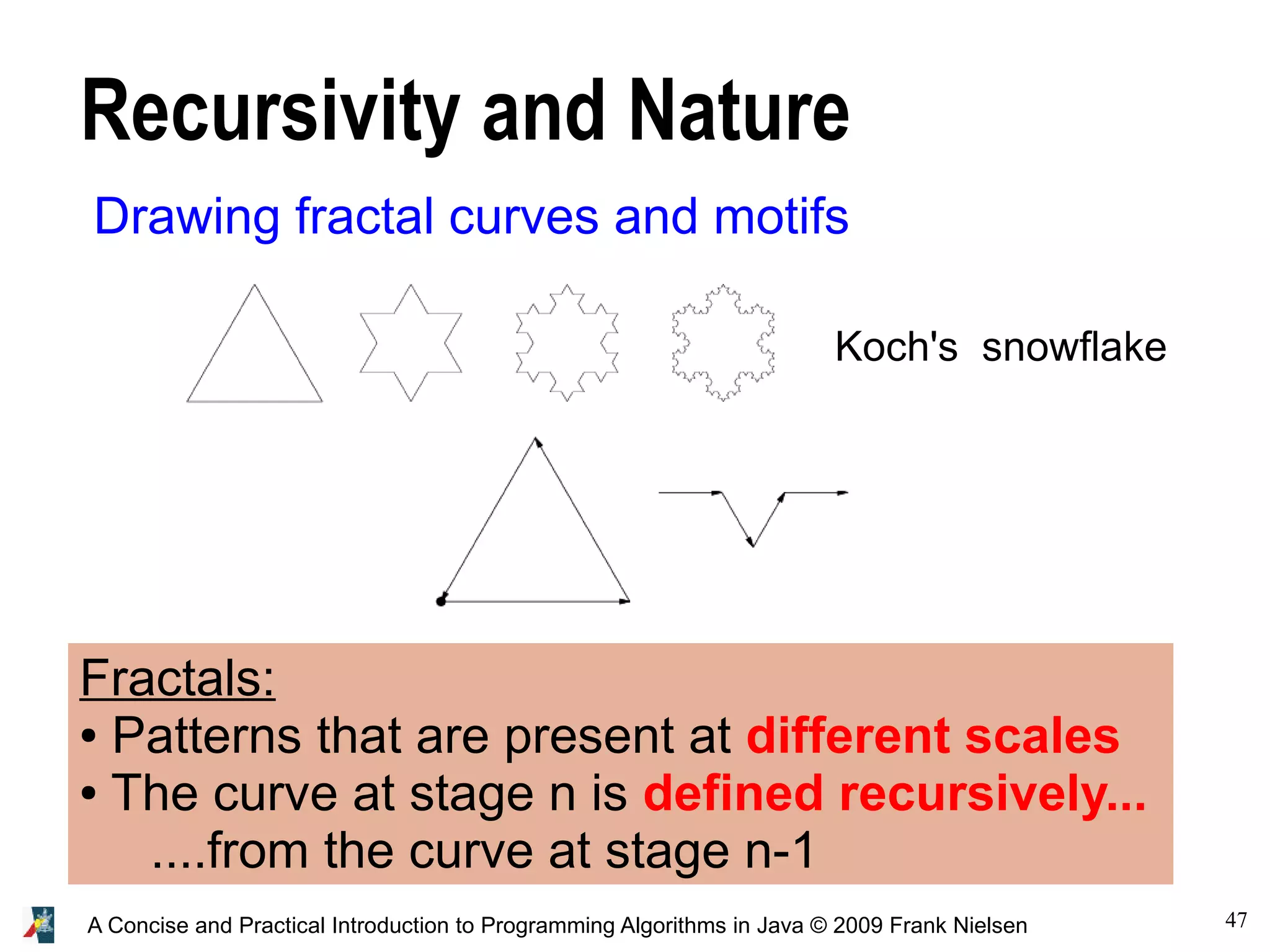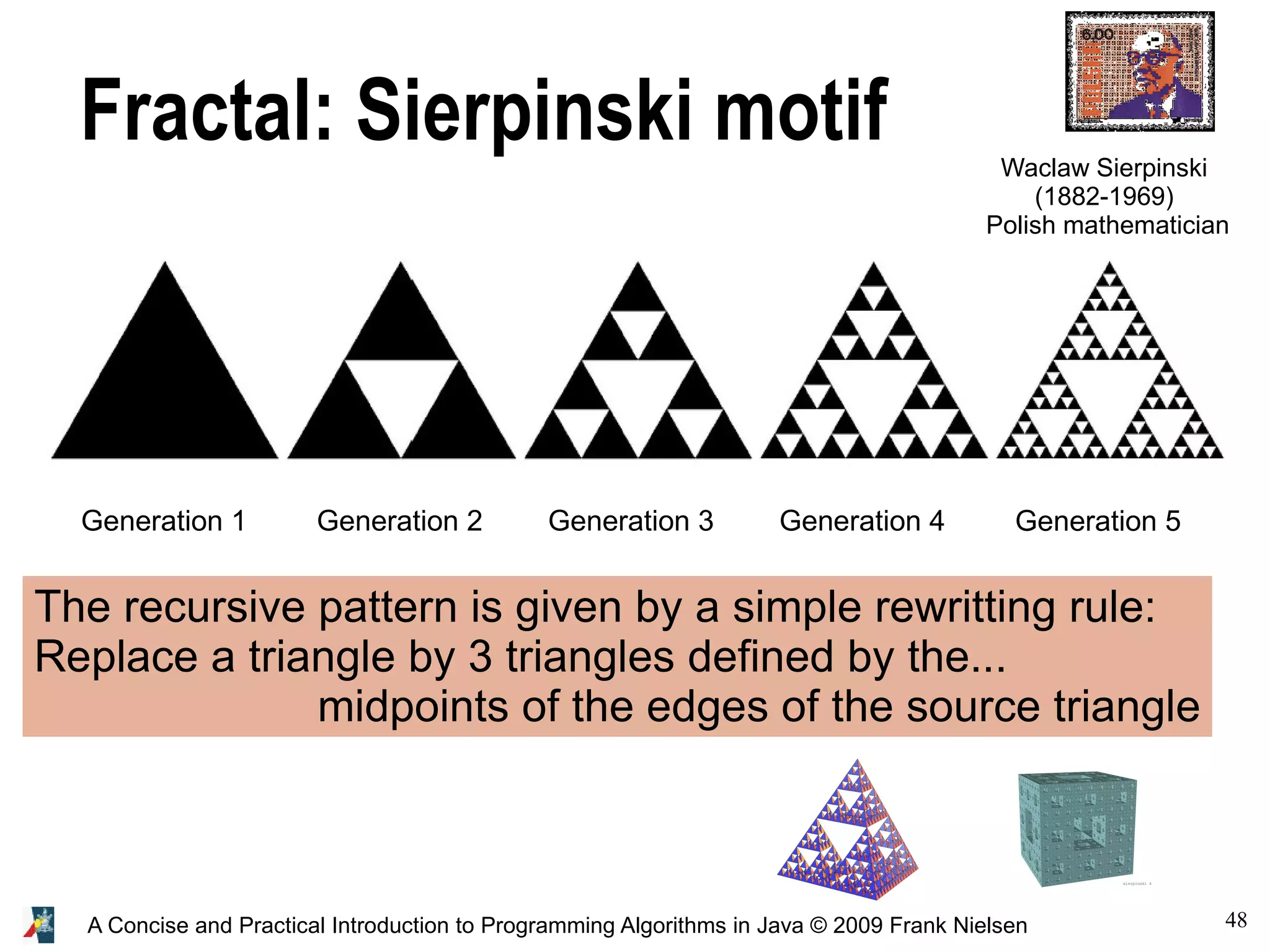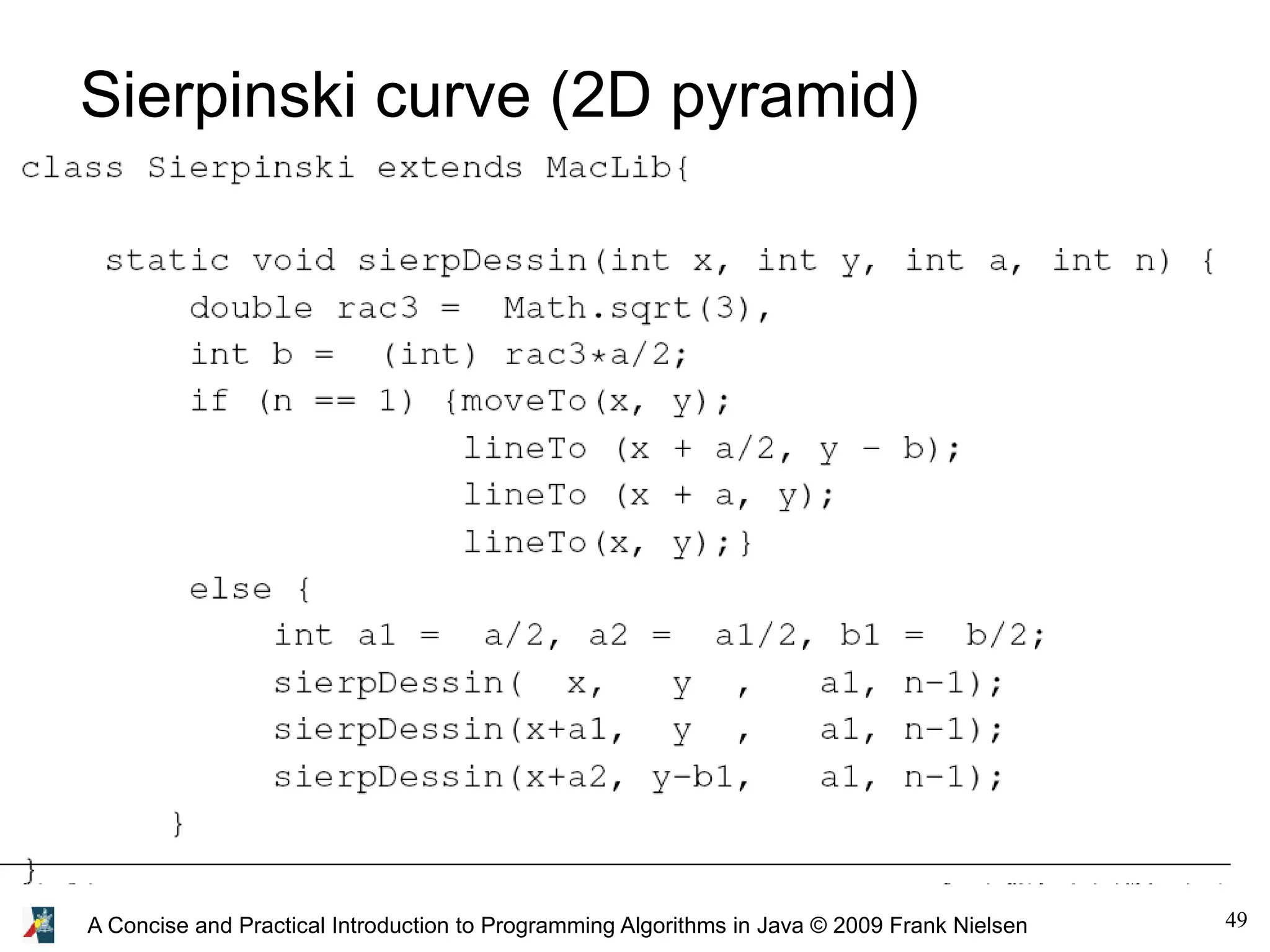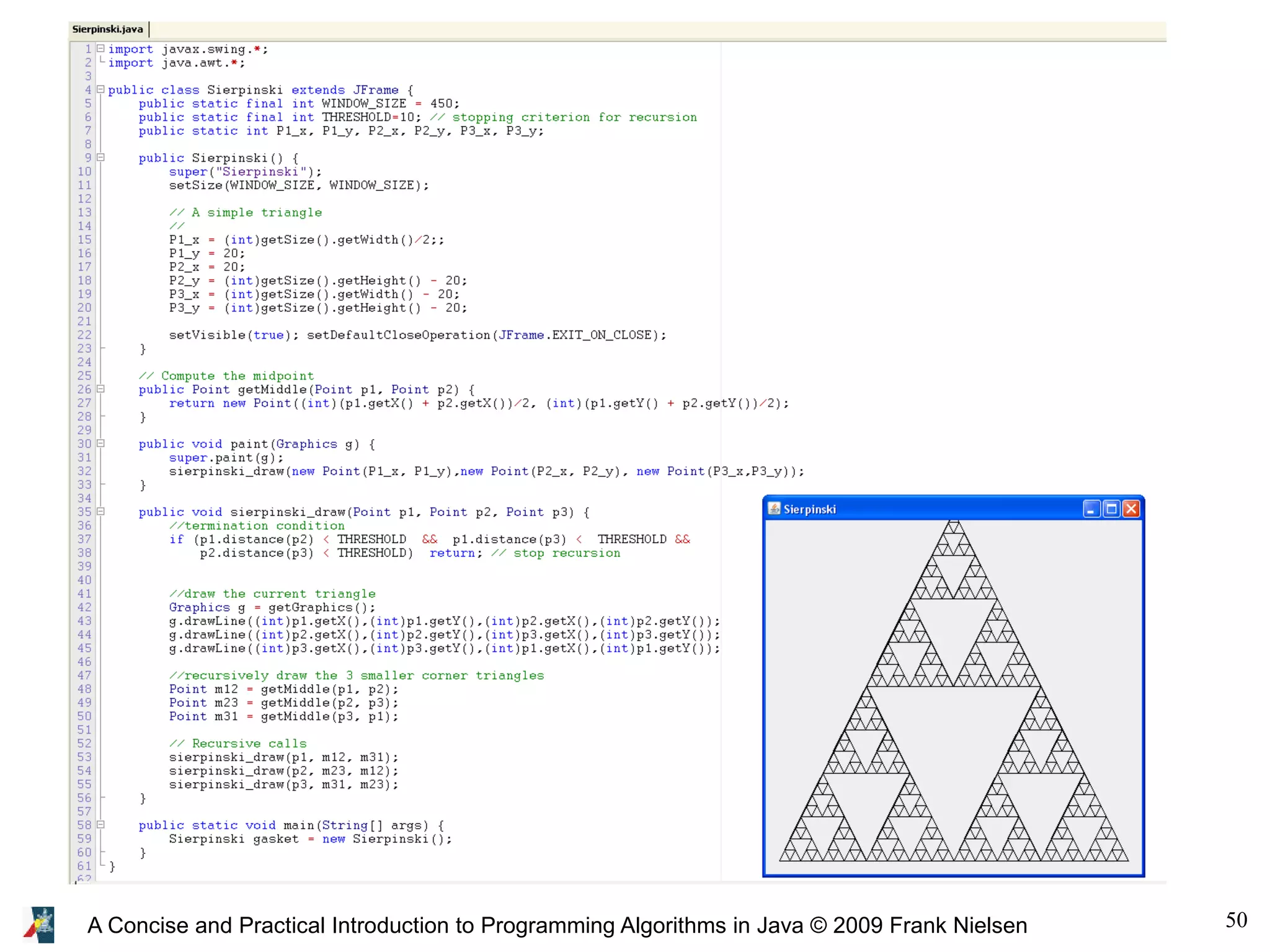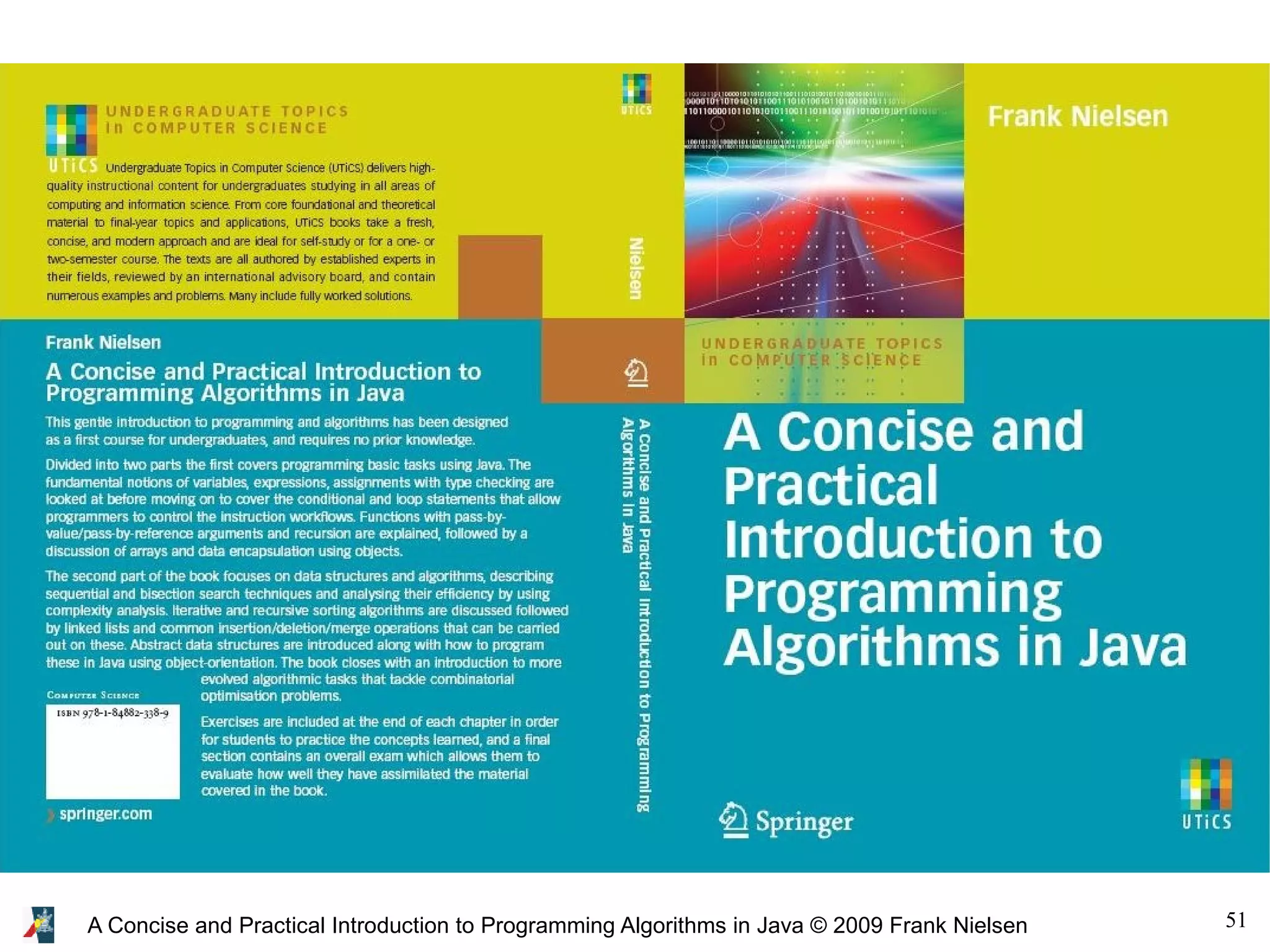The document provides a practical introduction to programming algorithms in Java, focusing primarily on functions and recursion. It covers the definition and usage of functions, including their structure, types, and examples, as well as discussions on recursion and its principles. Various examples, such as factorial and Fibonacci functions, are utilized to illustrate these concepts along with their implications in programming.
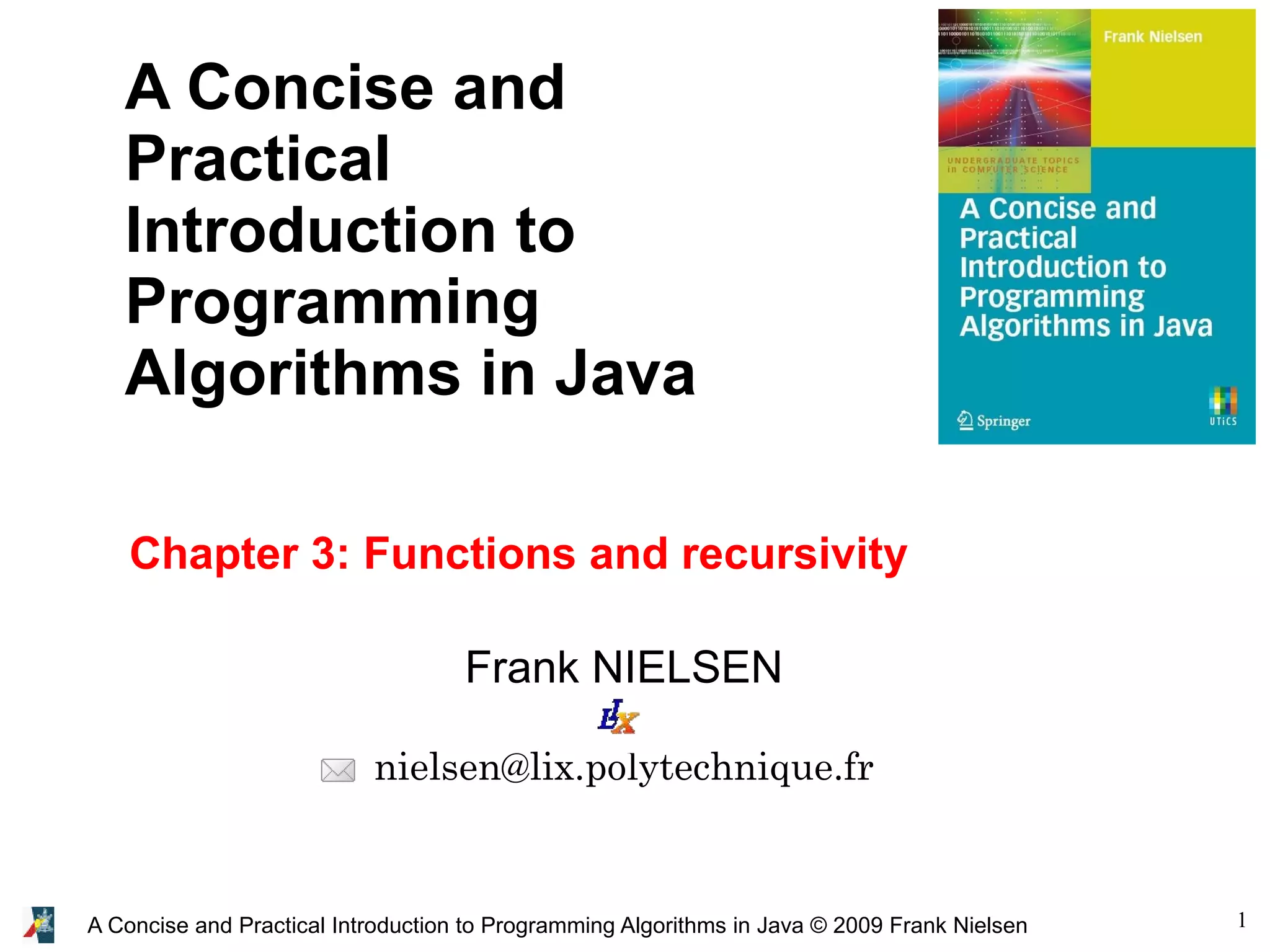
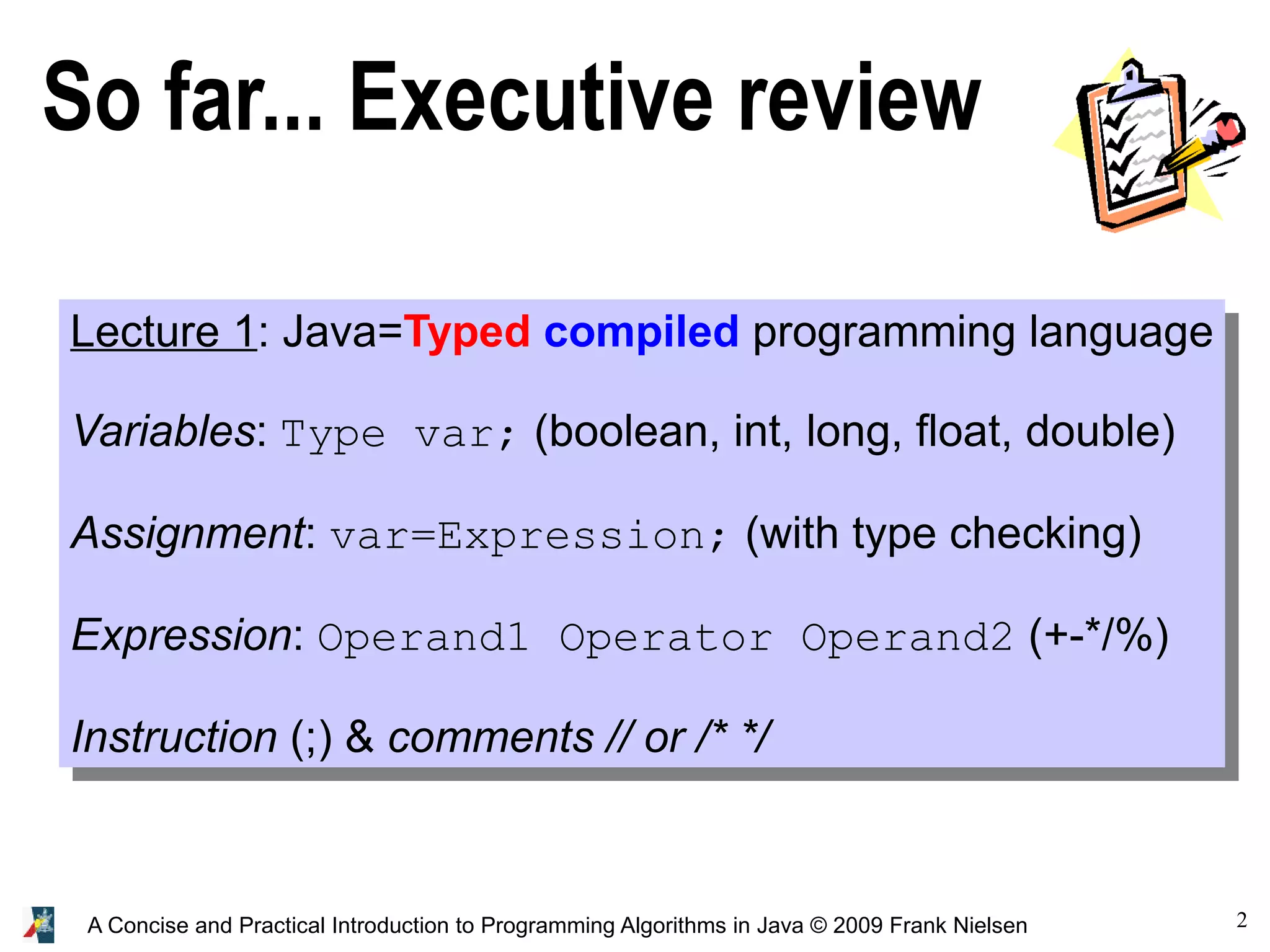
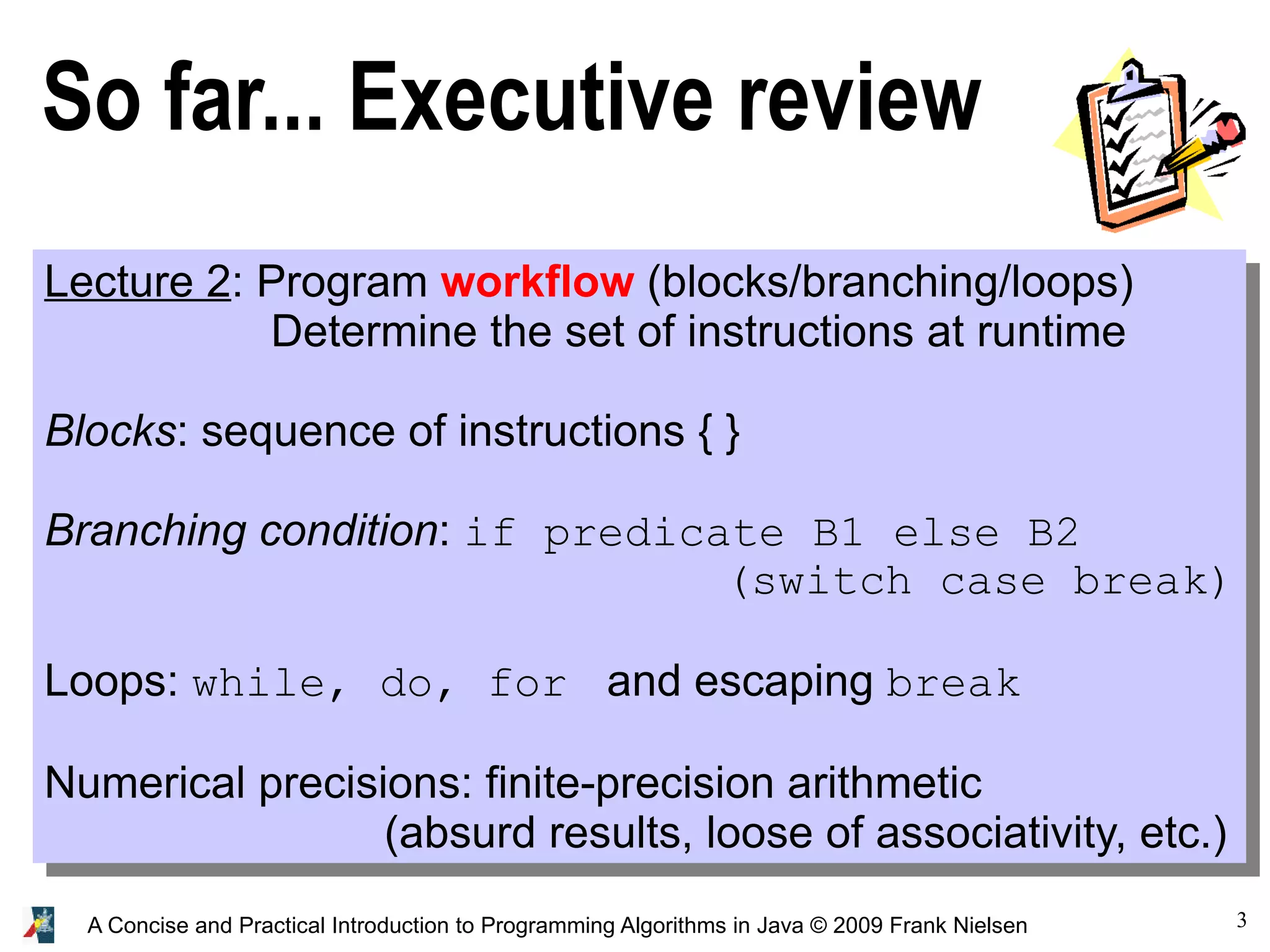
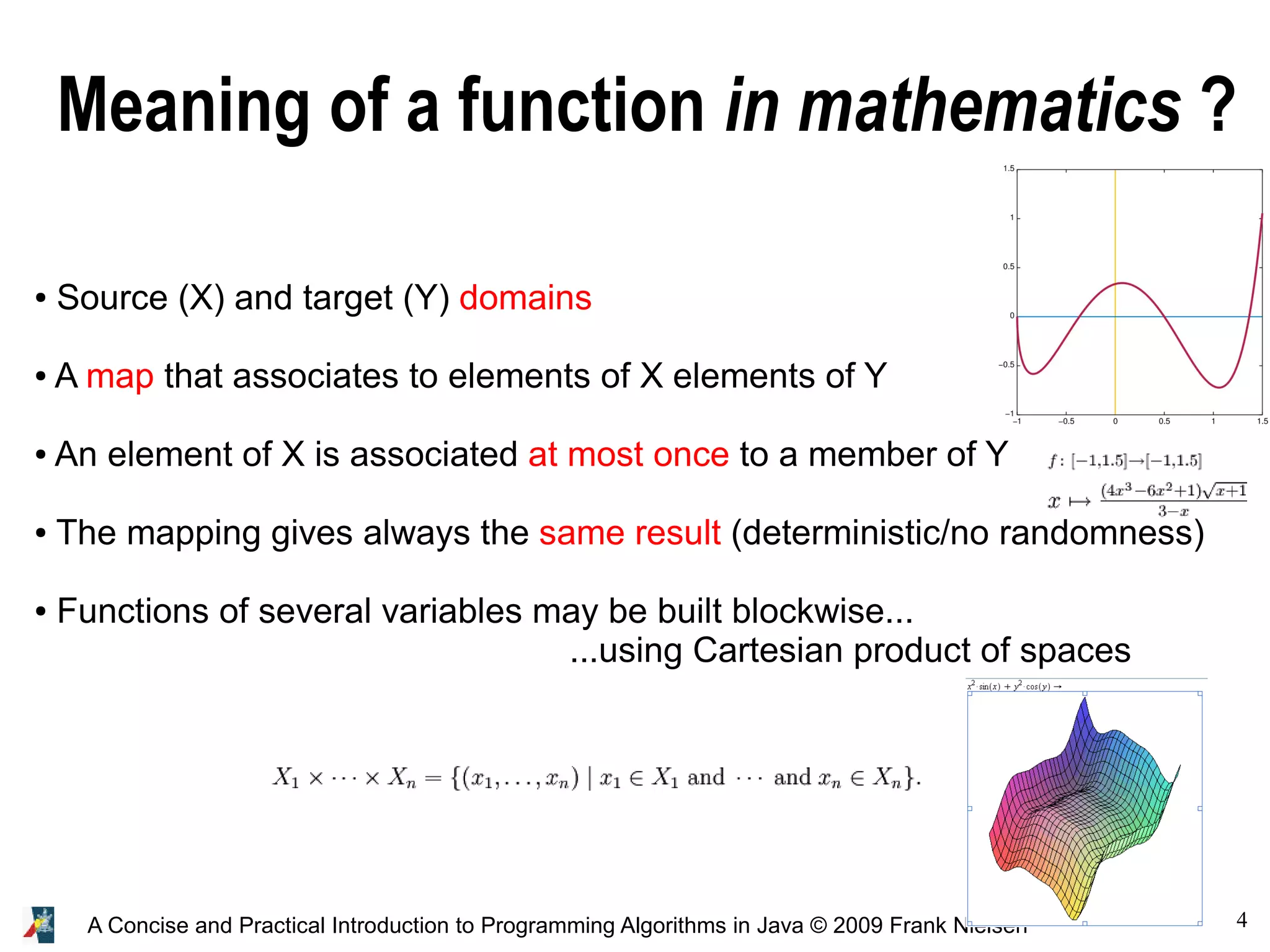
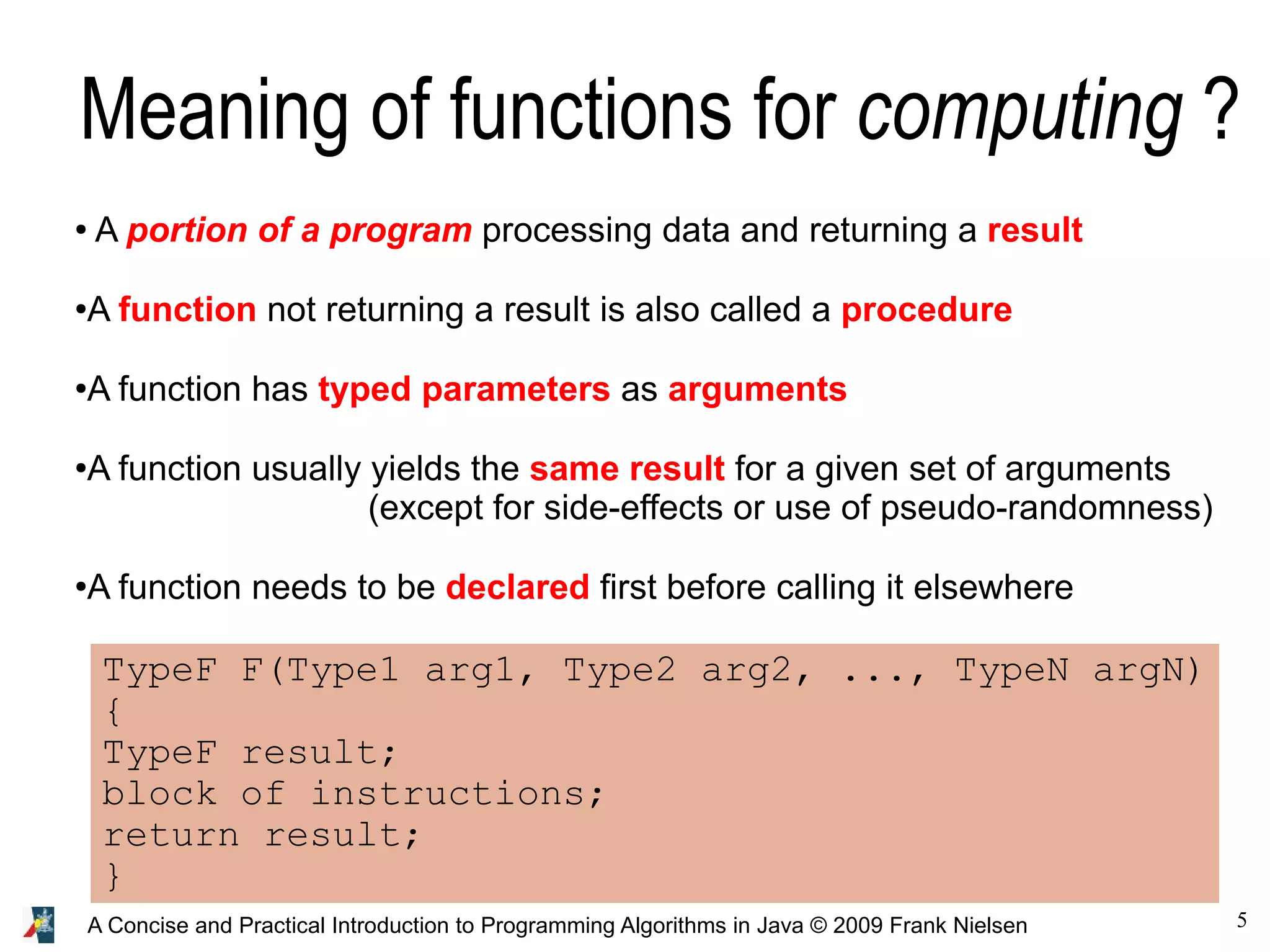
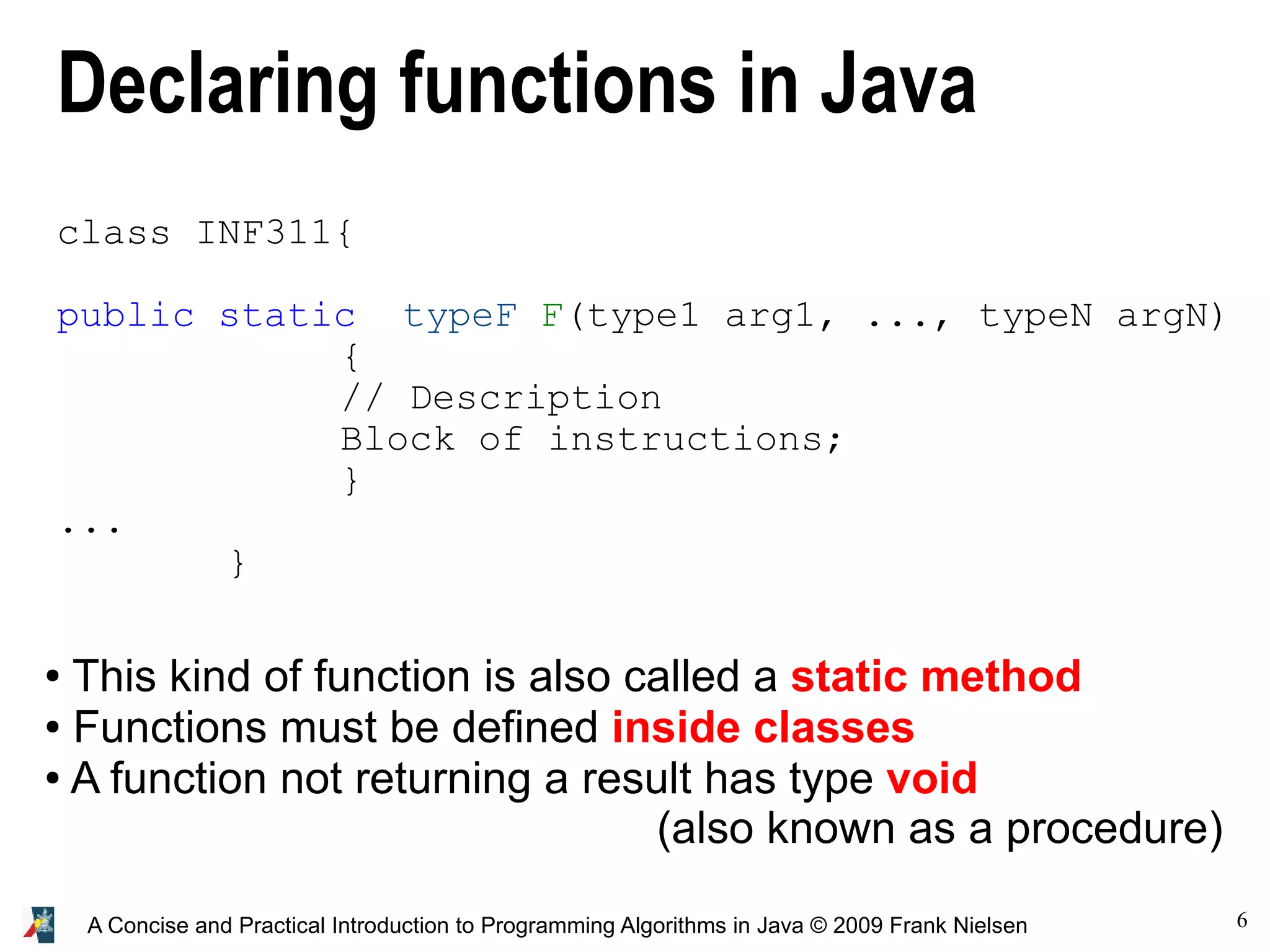
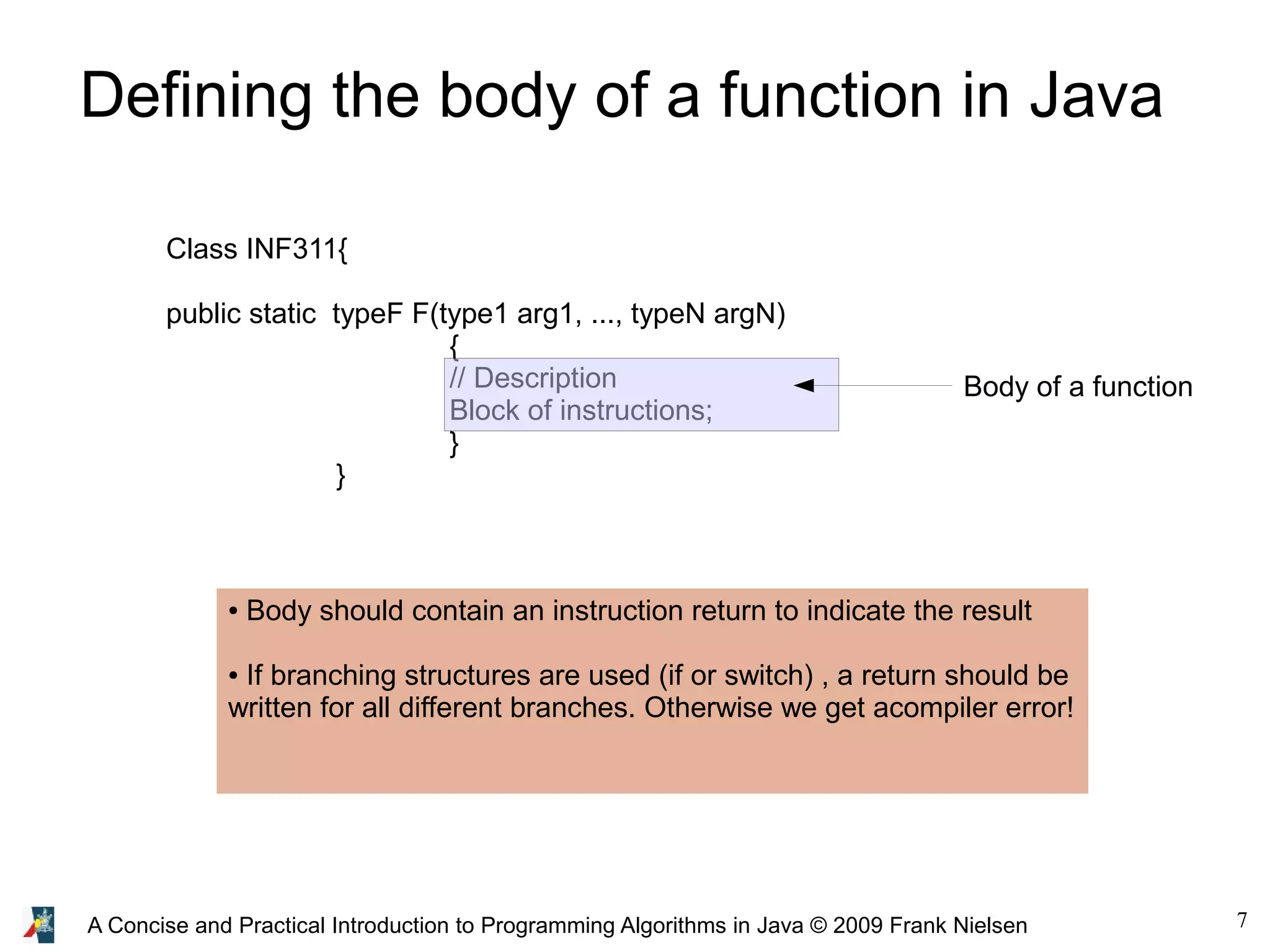
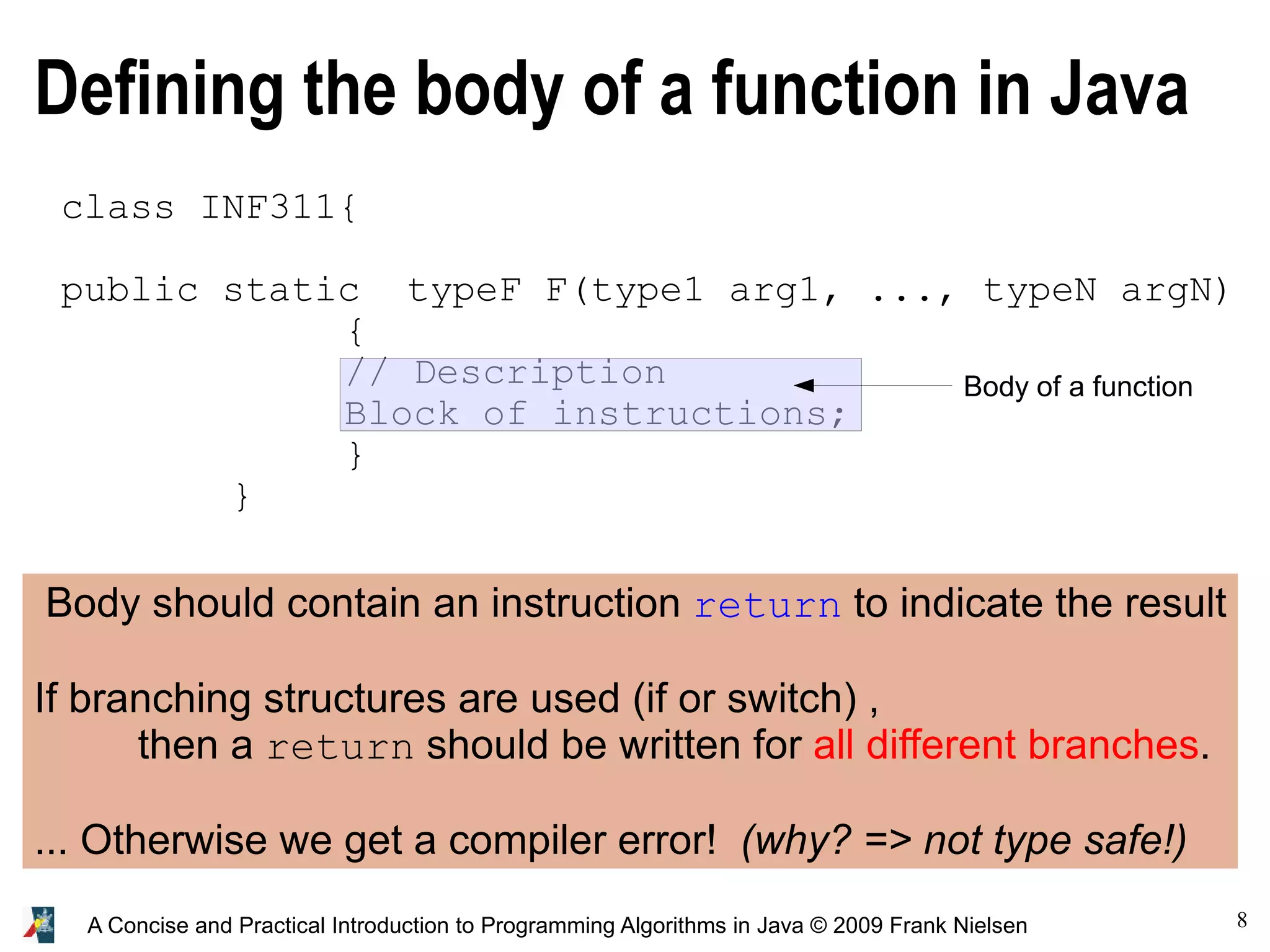
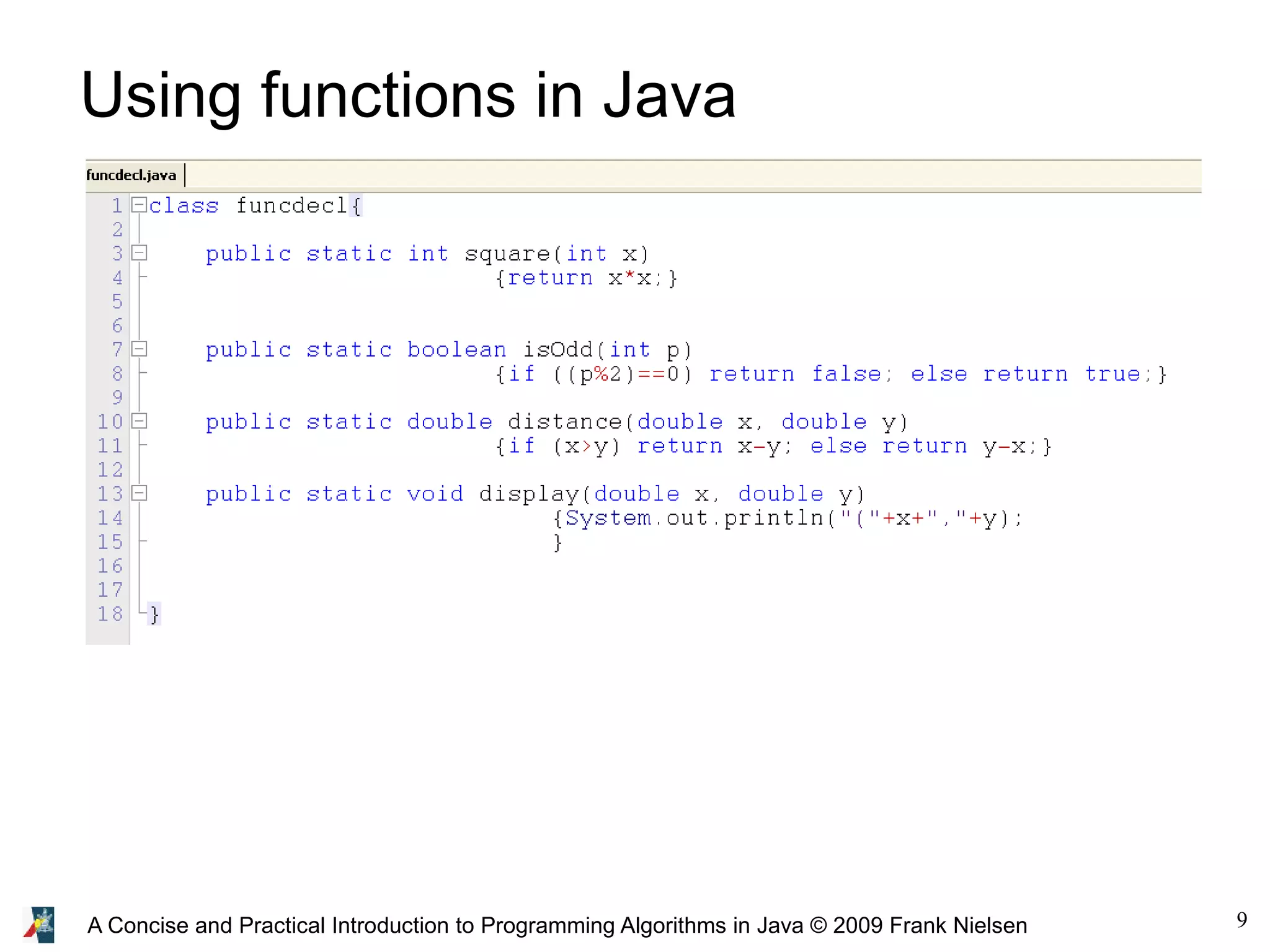
![10A Concise and Practical Introduction to Programming Algorithms in Java © 2009 Frank Nielsen A few examples of basic functions class FuncDecl{ public static int square(int x) {return x*x;} public static boolean isOdd(int p) {if ((p%2)==0) return false; else return true;} public static double distance(double x, double y) {if (x>y) return x-y; else return y-x;} public static void display(double x, double y) {System.out.println("("+x+","+y+")"); return; // return void } public static void main (String[] args) { ... } }](https://image.slidesharecdn.com/programmingalgorithmsjava-3-140701005310-phpapp01/75/chapter-3-A-Concise-and-Practical-Introduction-to-Programming-Algorithms-in-Java-10-2048.jpg)
![11A Concise and Practical Introduction to Programming Algorithms in Java © 2009 Frank Nielsen class FuncDecl{ public static int square(int x){...} public static boolean isOdd(int p) {...} public static double distance(double x, double y) {...} public static void display(double x, double y) {...} public static void main (String[] args) { display(3,2); display(square(2),distance(5,9)); int p=123124345; if (isOdd(p)) System.out.println("p is odd"); else System.out.println("p is even"); } } A few examples of basic functions](https://image.slidesharecdn.com/programmingalgorithmsjava-3-140701005310-phpapp01/75/chapter-3-A-Concise-and-Practical-Introduction-to-Programming-Algorithms-in-Java-11-2048.jpg)
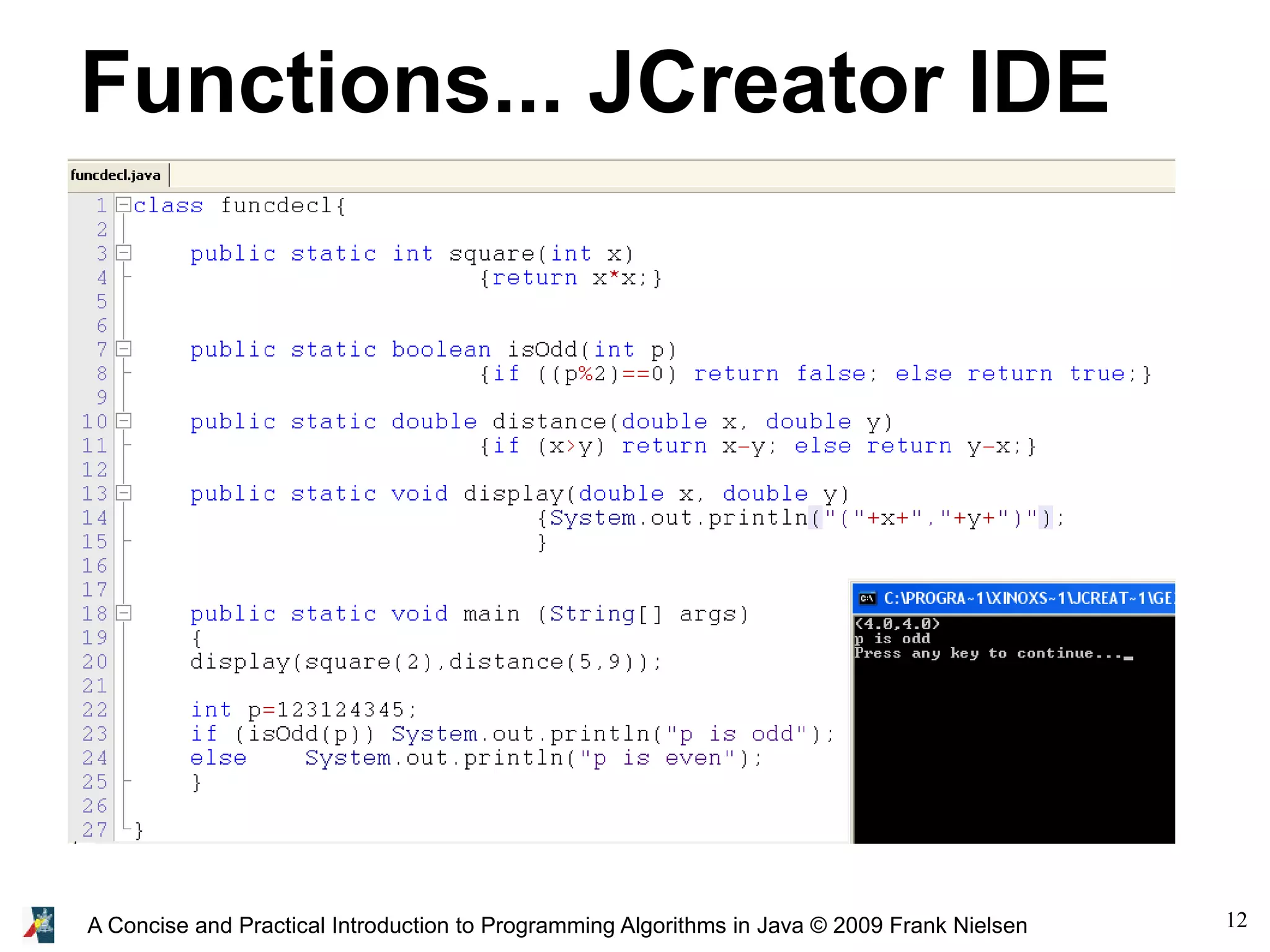
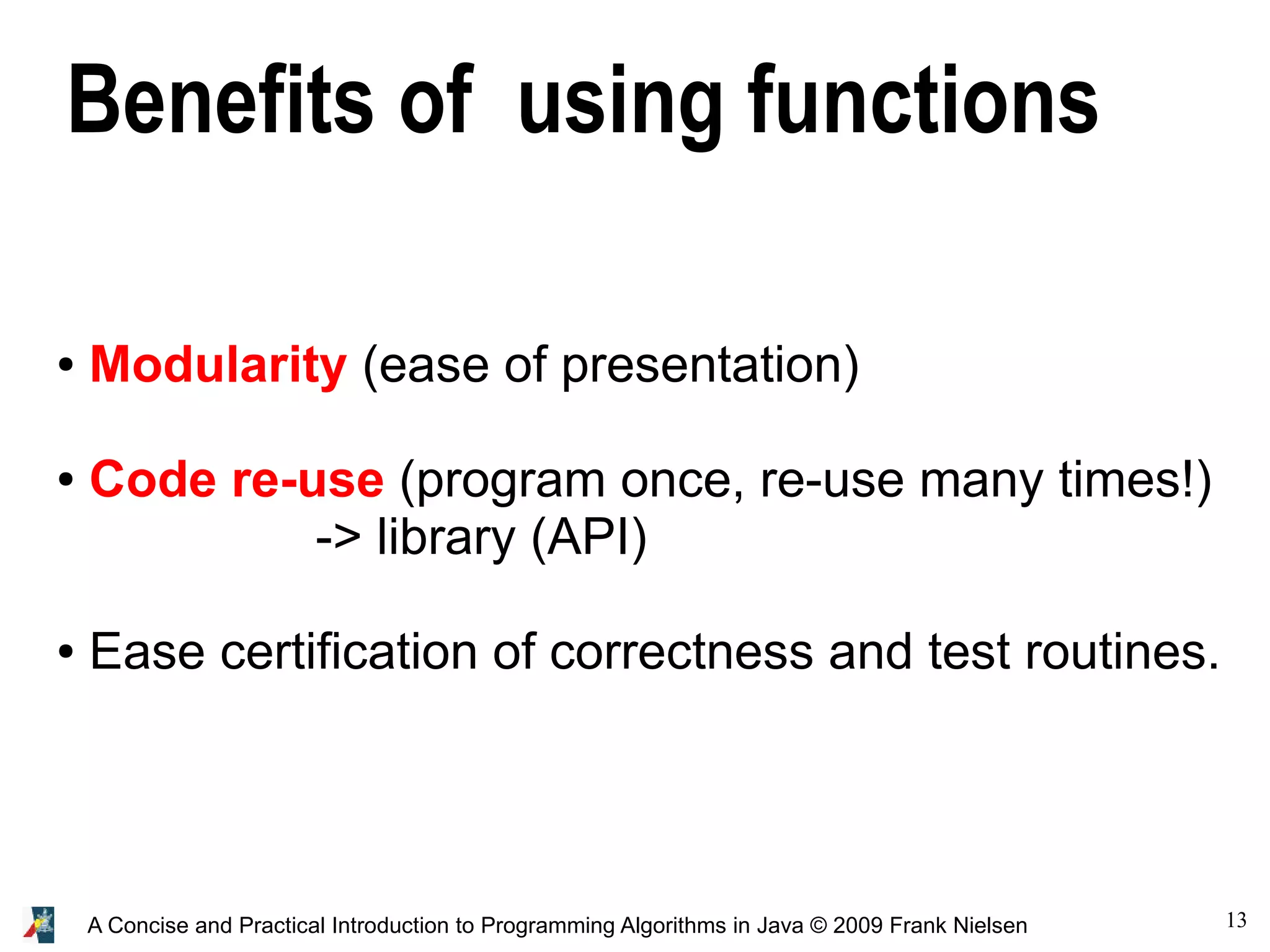
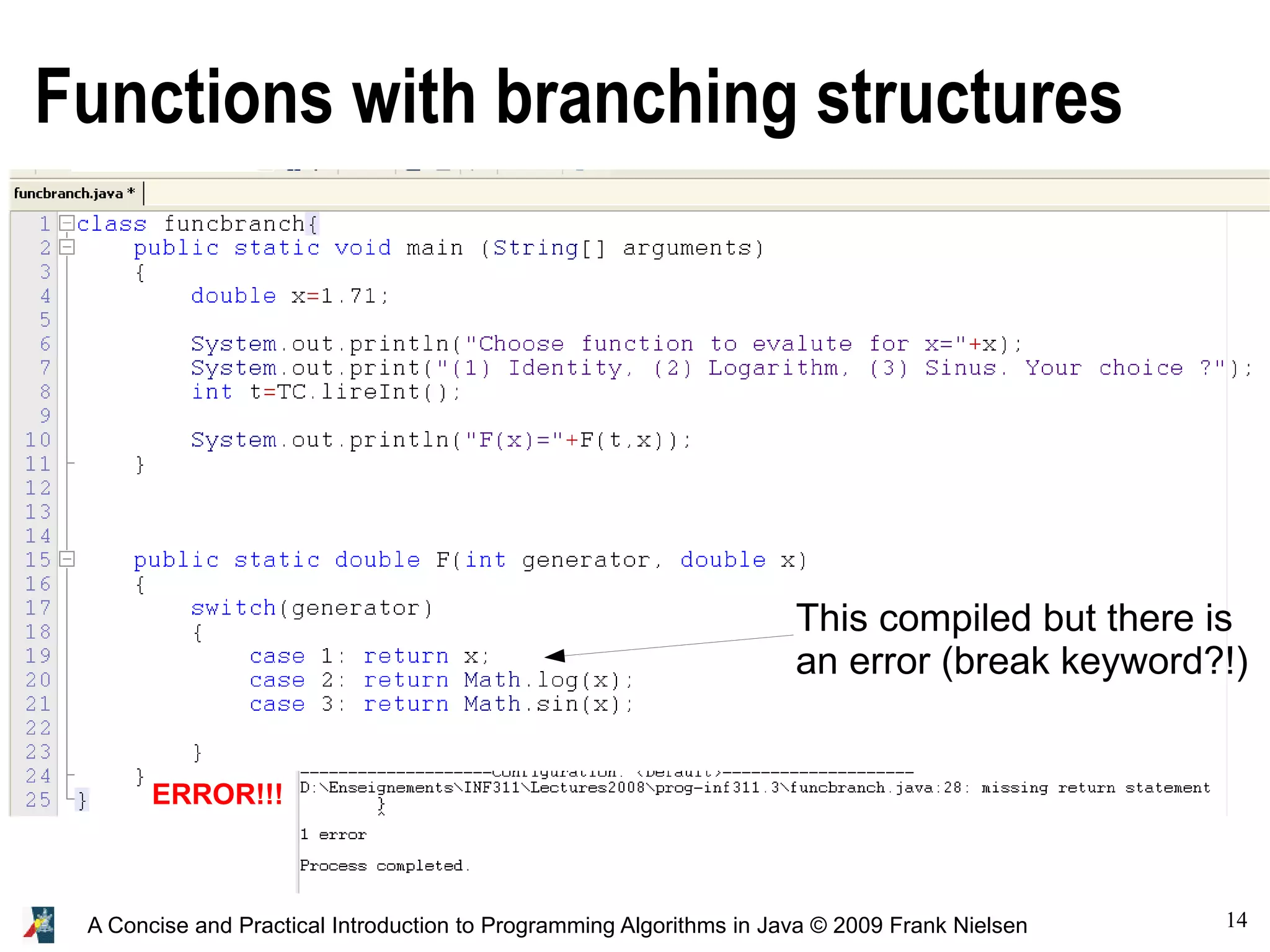
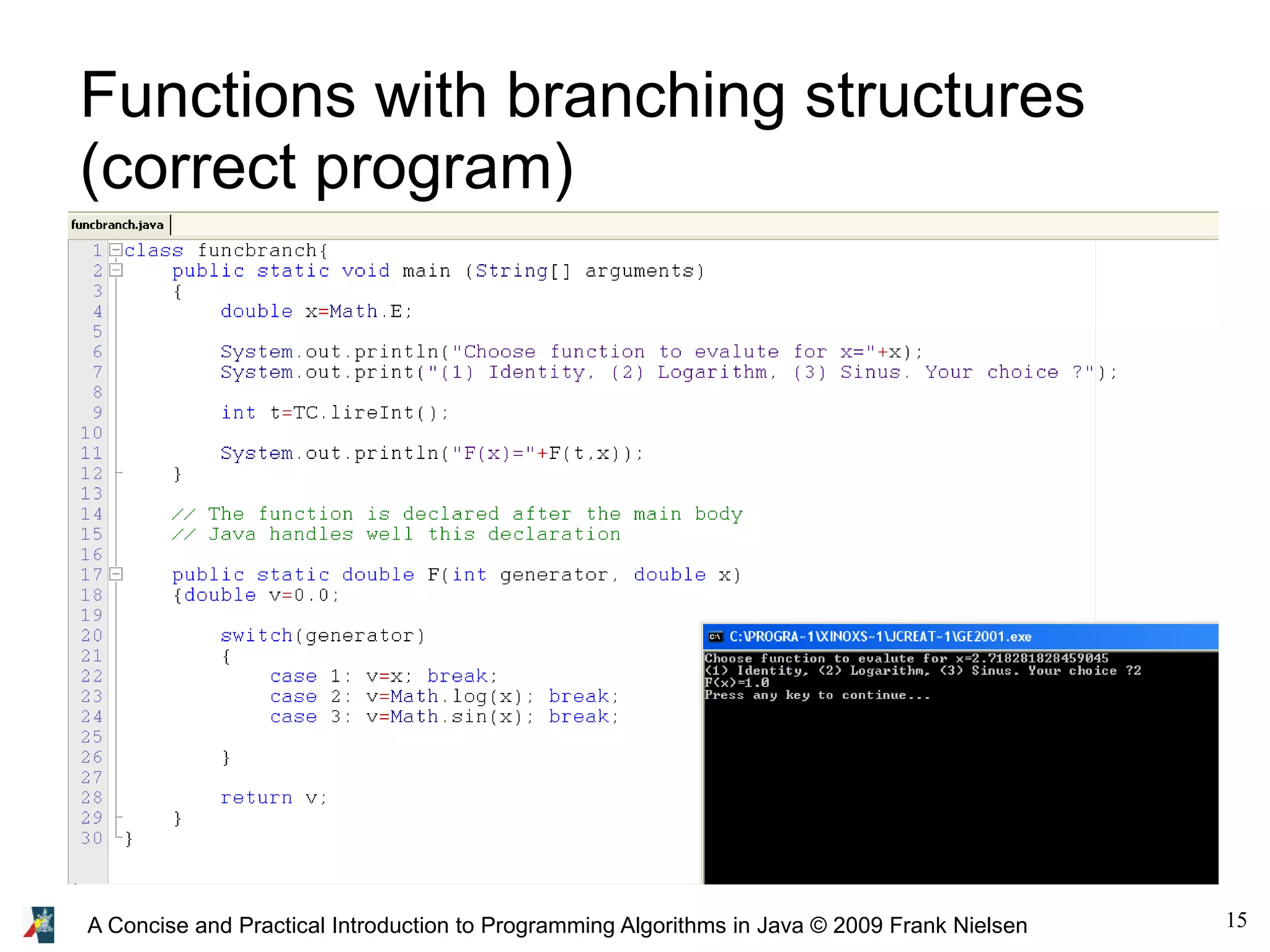
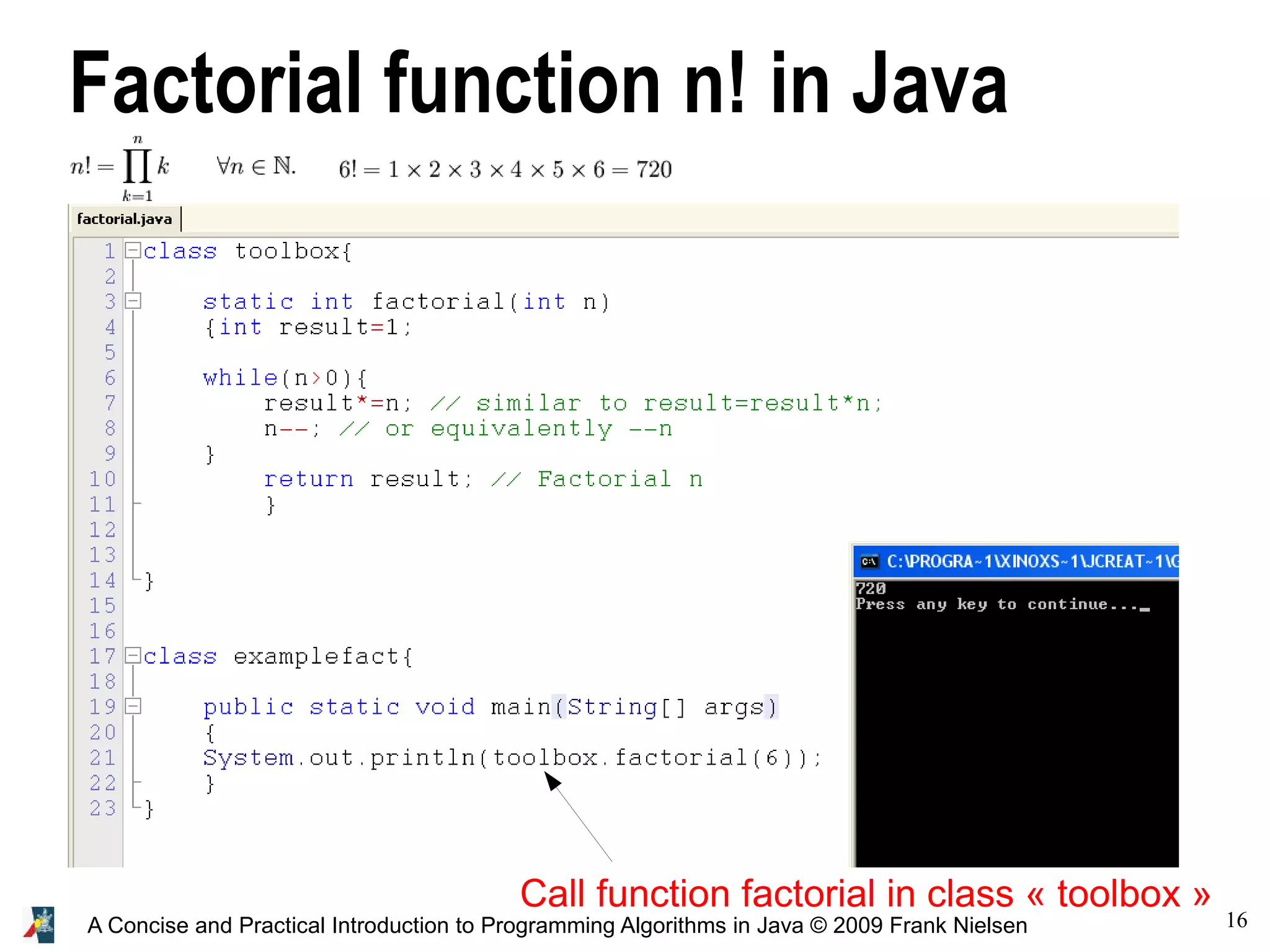
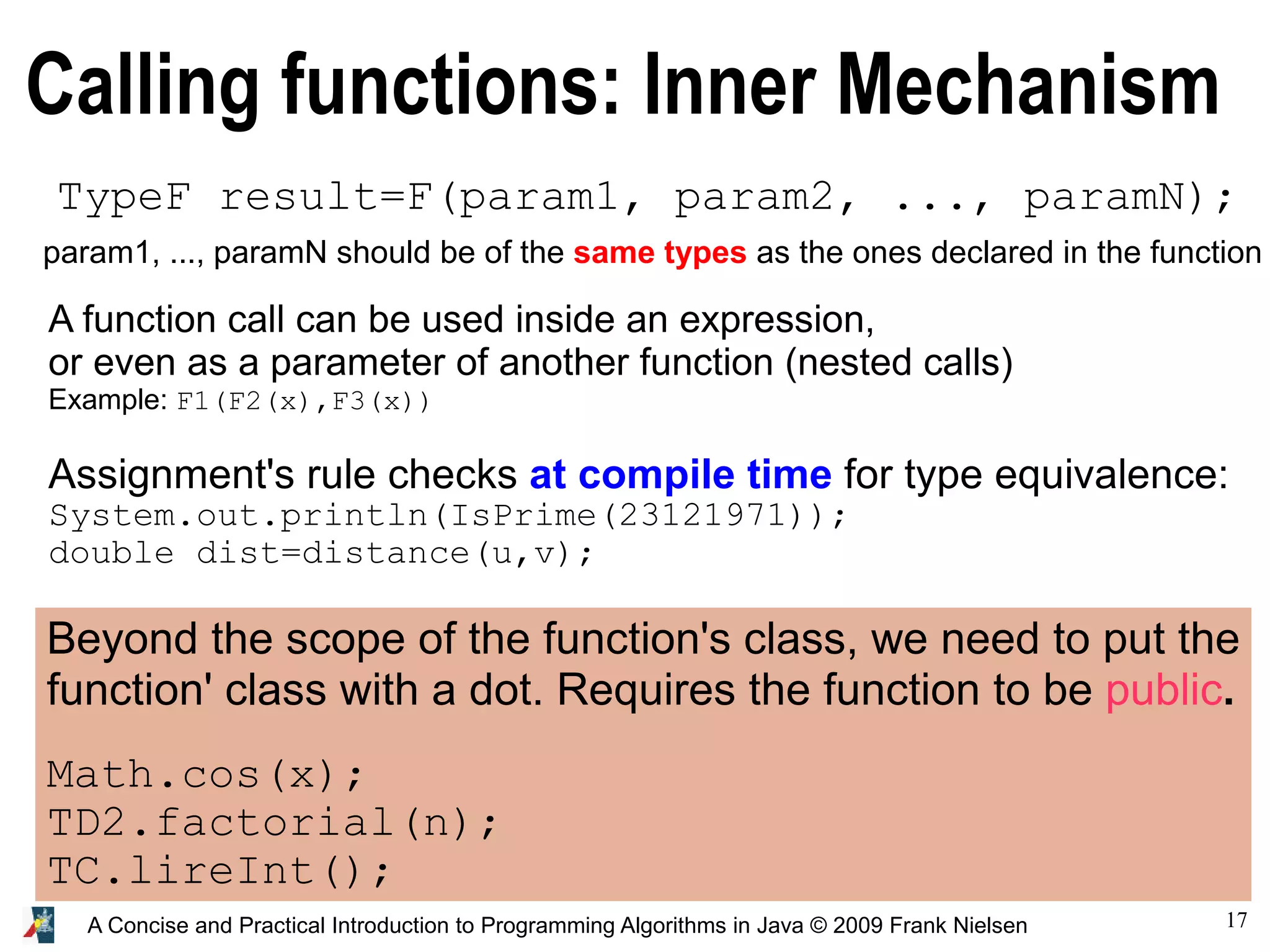
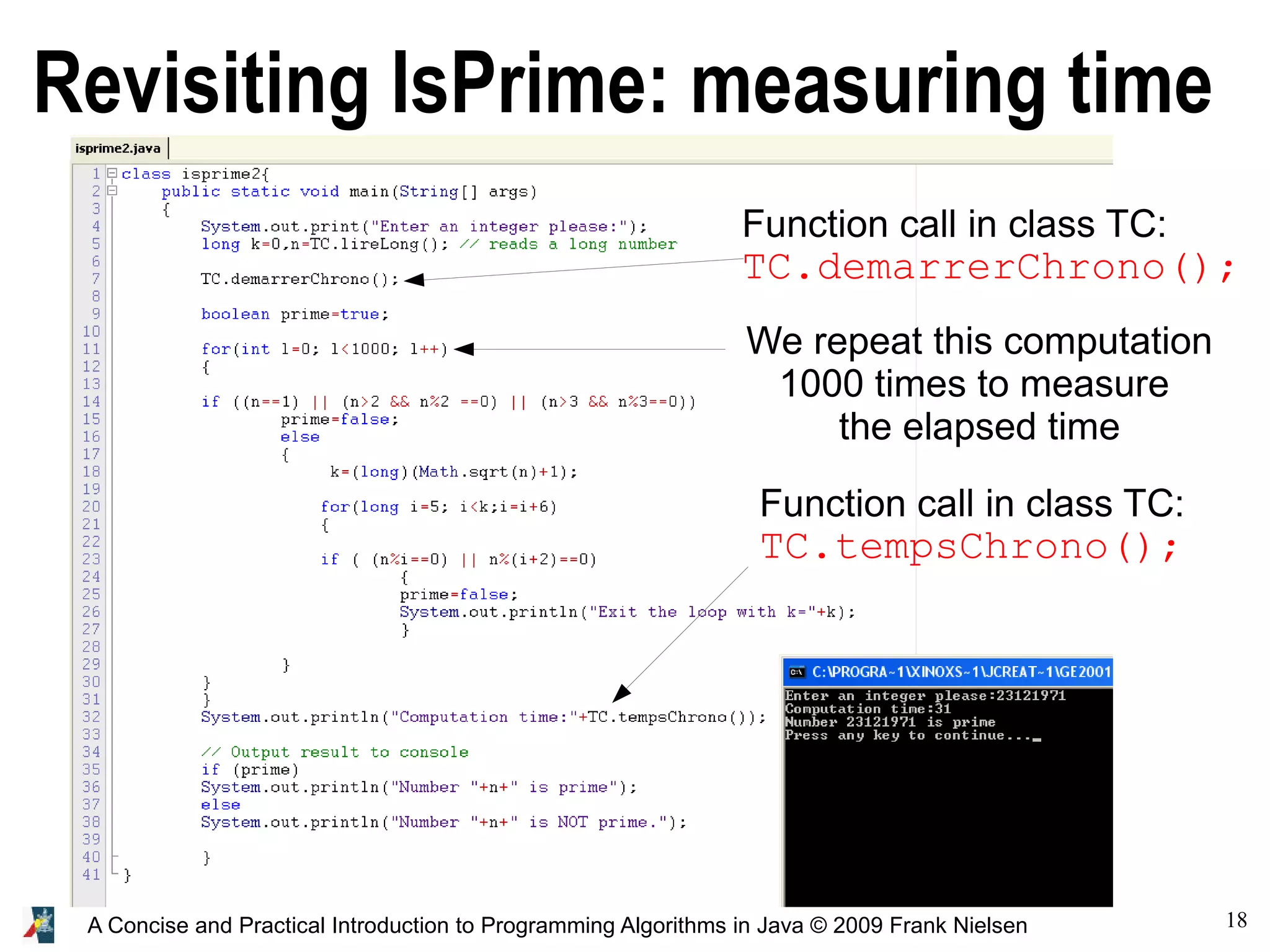
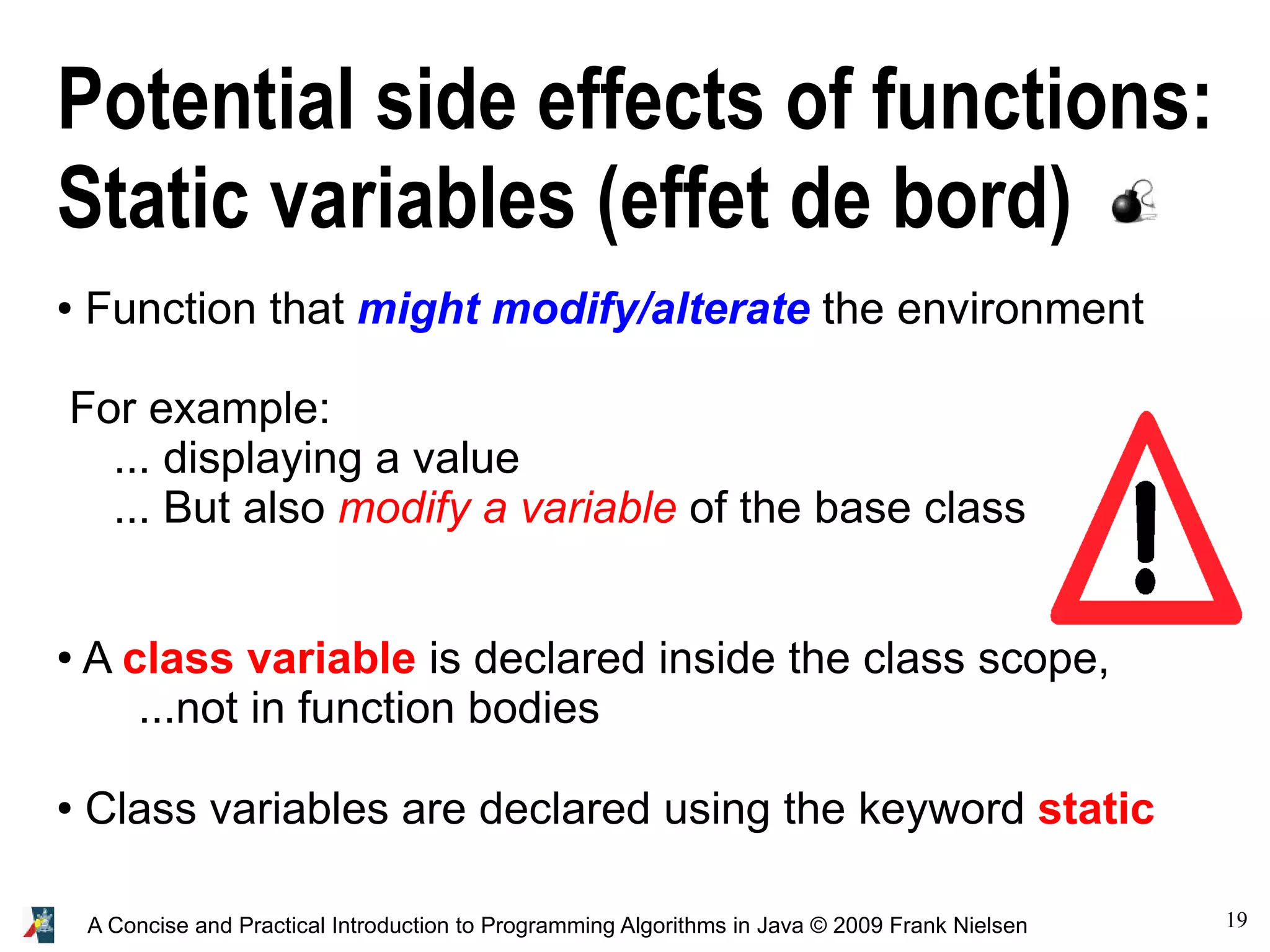
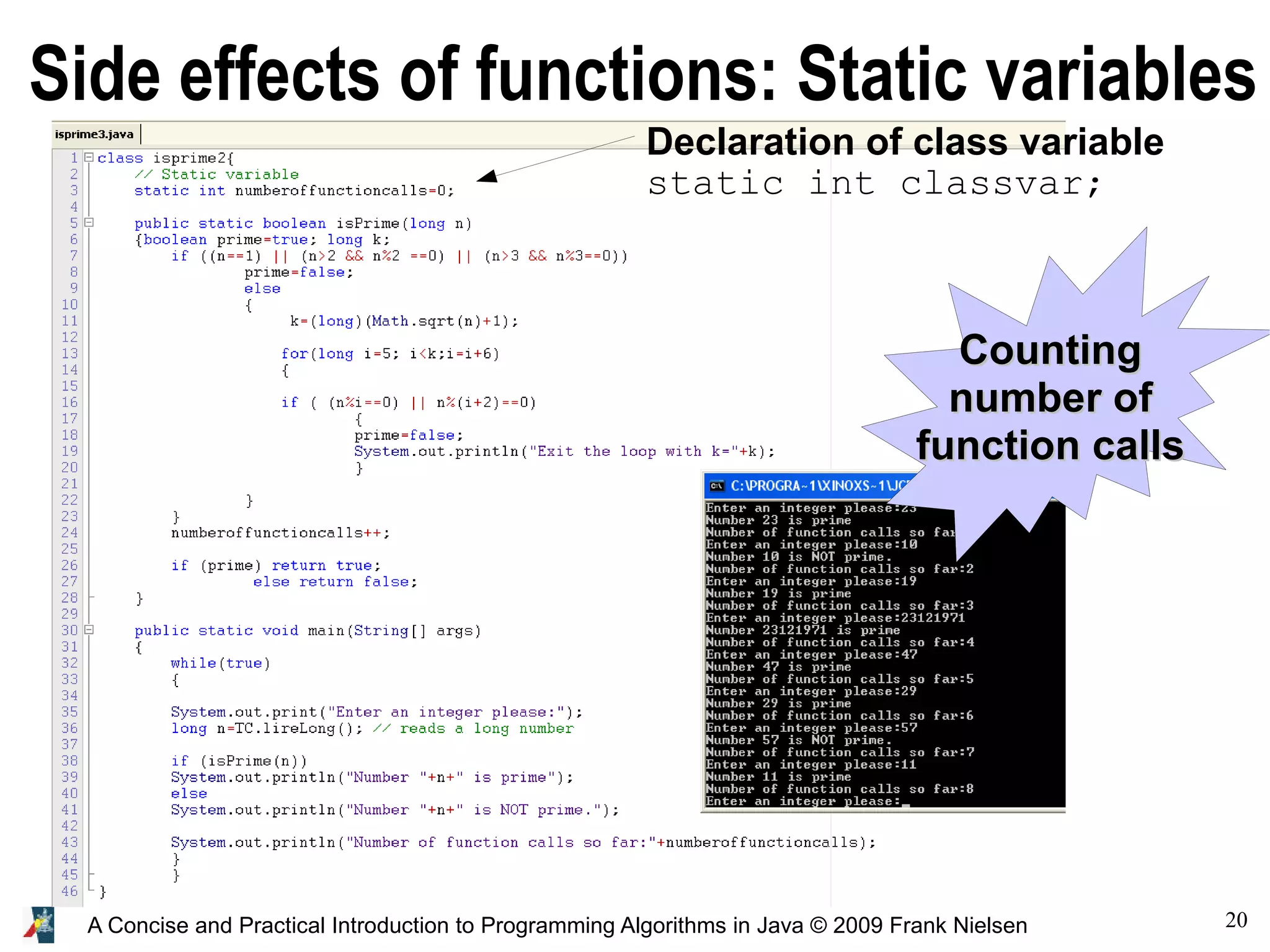
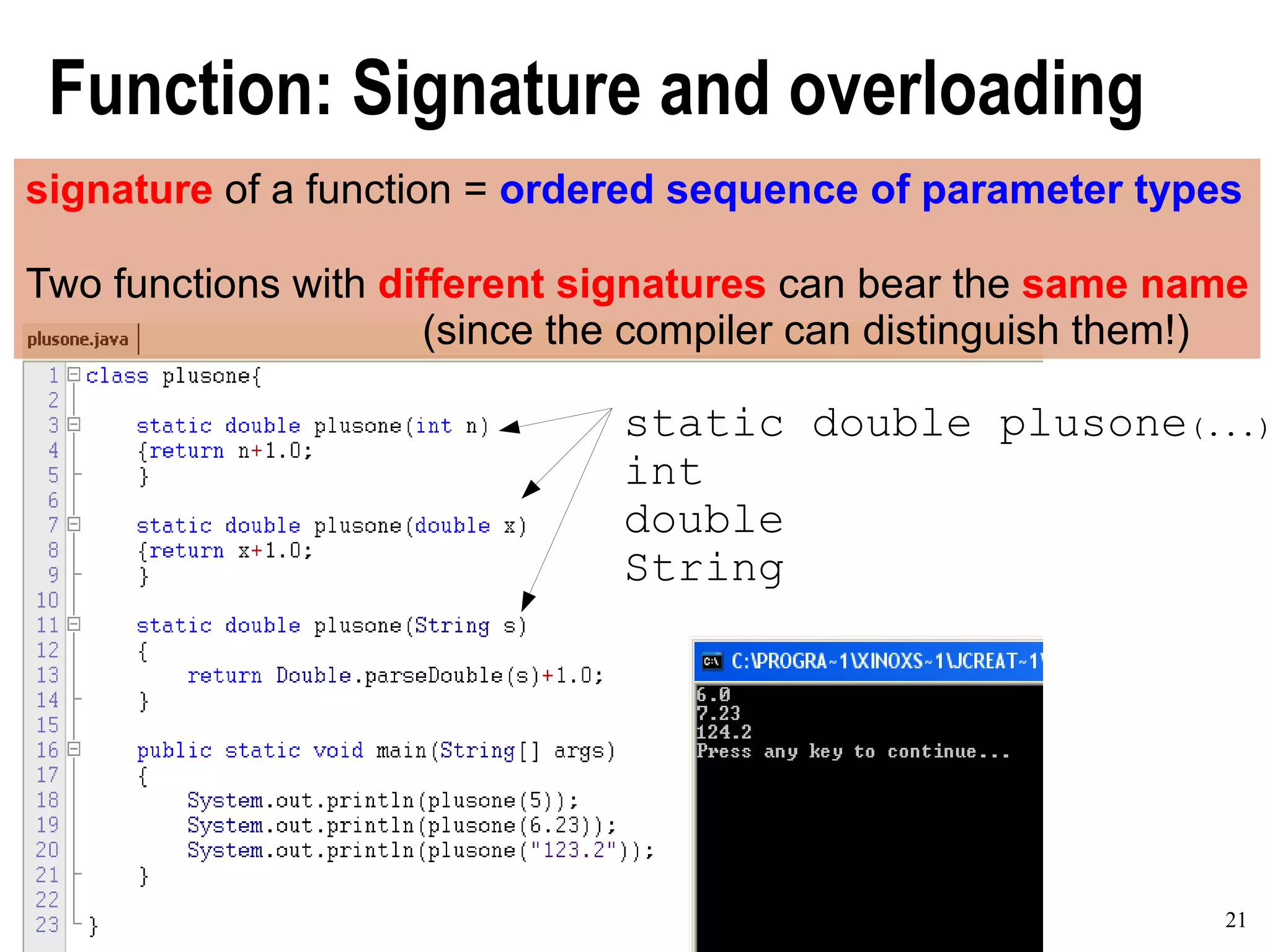
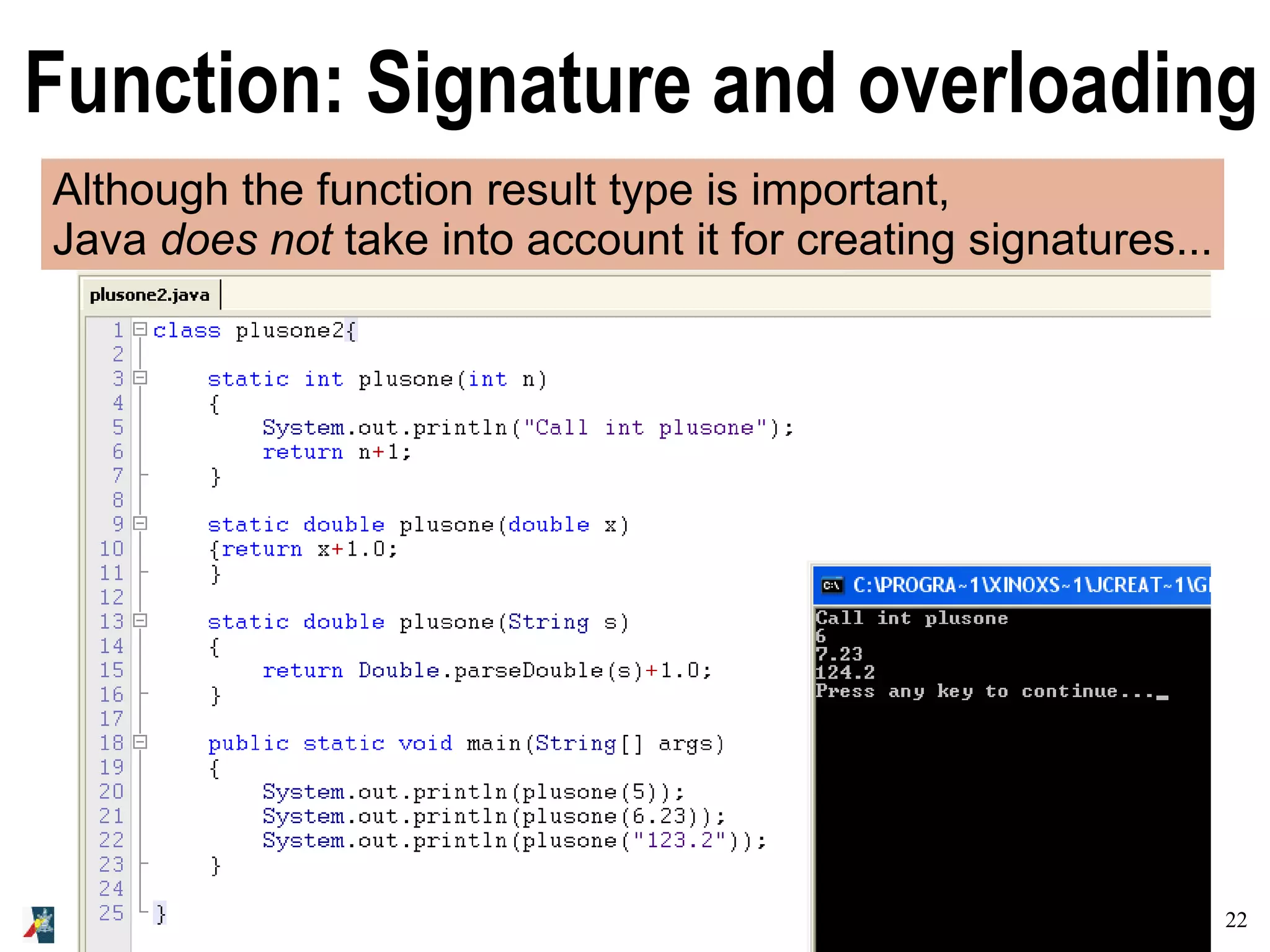
![23A Concise and Practical Introduction to Programming Algorithms in Java © 2009 Frank Nielsen Function: Signature and overloading static int plusone (int n) static double plusone(int n) !!! COMPILATION ERROR !!! class SignatureError{ public static int plusone(int n) {return n+1;} public static double plusone(int n) {return n+1.0;} public static void main(String args[]) {} } C:JSignature.java:6: plusone(int) is already defined in SignatureError static double plusone(int n)](https://image.slidesharecdn.com/programmingalgorithmsjava-3-140701005310-phpapp01/75/chapter-3-A-Concise-and-Practical-Introduction-to-Programming-Algorithms-in-Java-23-2048.jpg)
![24A Concise and Practical Introduction to Programming Algorithms in Java © 2009 Frank Nielsen Executing functions in Java ● Work place of the function is created when the function is called ● ... and destroyed once it is executed (value returned) ● Parameter values are equal to the results of the expressions ● Function parameters are allocated in memory reserved for the function ● If a parameter is modified inside the function body, it remains unchanged in the calling function. public static void main(String args[])](https://image.slidesharecdn.com/programmingalgorithmsjava-3-140701005310-phpapp01/75/chapter-3-A-Concise-and-Practical-Introduction-to-Programming-Algorithms-in-Java-24-2048.jpg)
